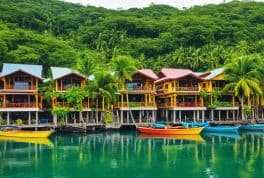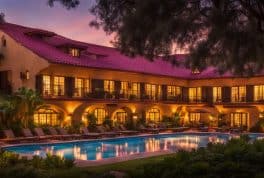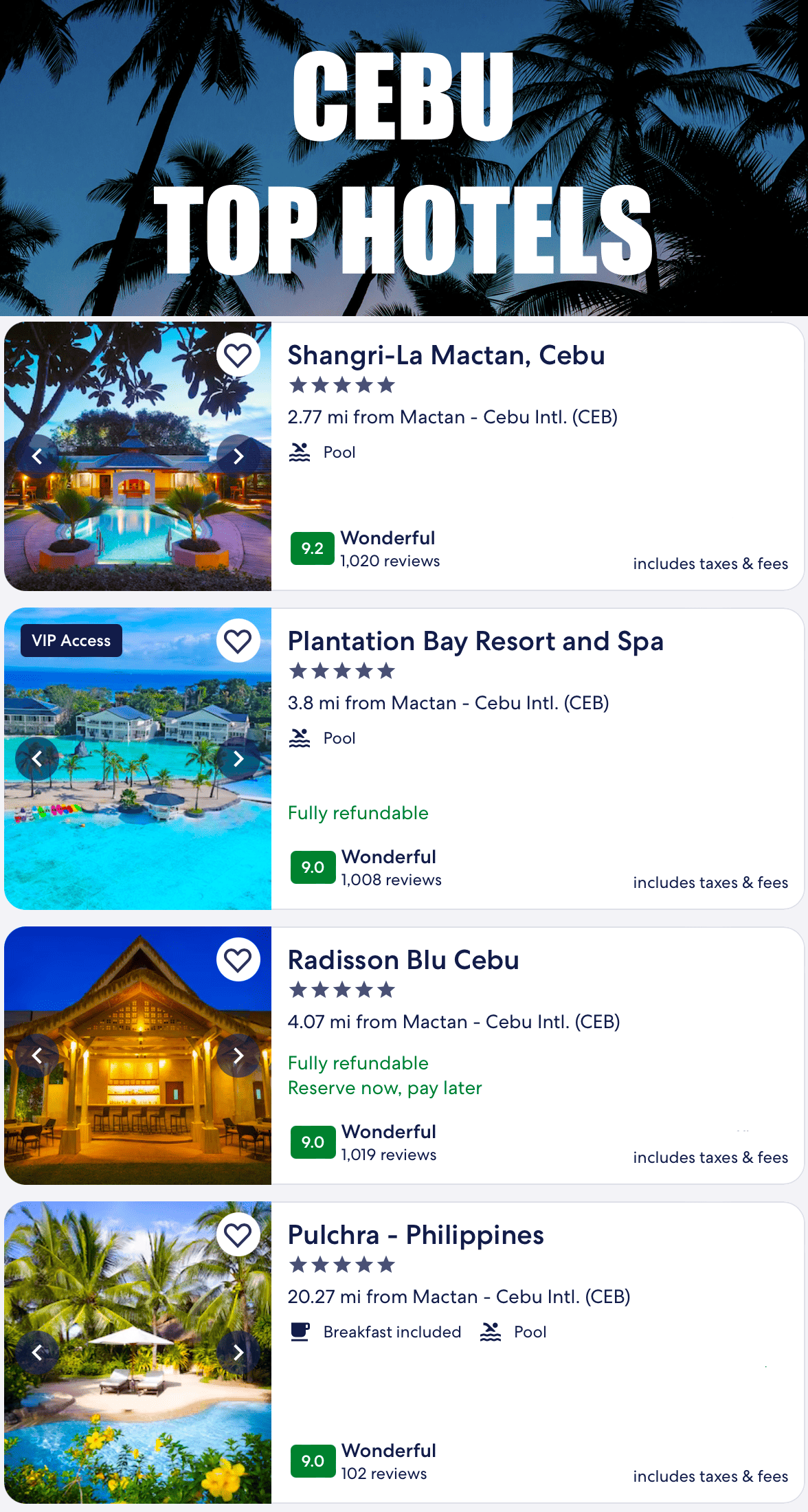Cebu Tourist Spot
Cebu, a vibrant blend of history and natural beauty, is adorned with remarkable spots like the Basilica Minore del Santo Niño and the historical Magellan's Cross. Its natural allure is highlighted by the breathtaking Kawasan Falls, the panoramic Osmeña Peak, and the pristine beaches of Mactan, Bantayan, and Malapascua Islands. Moalboal offers a unique marine spectacle with its sardine run, while Fort San Pedro speaks of the island's rich colonial past. Each destination in Cebu weaves a captivating tale of culture and scenic beauty.
Start Here! - Beautiful Tour of Cebu
Top 10 Cebu Tourist Spots
- Basilica Minore del Santo Niño: An iconic 16th-century church in Cebu City, known for housing the revered statue of the Santo Niño (Holy Child).
- Magellan's Cross: A historical landmark in Cebu City, it symbolizes the introduction of Christianity in the Philippines.
- Kawasan Falls: A stunning multi-layered waterfall located in Badian, known for its crystal-clear turquoise waters and scenic natural surroundings.
- Osmeña Peak: The highest point in Cebu, offering breathtaking panoramic views of the island's landscape.
- Tumalog Falls: A picturesque and serene waterfall near Oslob, known for its unique cascading waters over a mossy cliff.
- Mactan Island: Renowned for its world-class resorts, beautiful beaches, and diving spots, as well as being a historical site where the Battle of Mactan took place.
- Moalboal: A small town famous for its sardine run, beautiful coral reefs, and excellent diving and snorkeling opportunities.
- Malapascua Island: A remote island off the northern tip of Cebu, known for its thresher shark diving and pristine white sand beaches.
- Fort San Pedro: A historical military defense structure in Cebu City, offering insight into the Spanish colonial era in the Philippines.
- Bantayan Island: Known for its tranquil atmosphere, stunning beaches, and charming rural landscapes, it's a perfect destination for relaxation and exploration.
Guides and Tours

Top 10 Questions and Answers about Cebu Tourist Spots
What are the top tourist spots in Cebu?
Can you swim with whale sharks in Cebu?
Is Cebu good for diving?
What cultural experiences can I enjoy in Cebu?
Are there good hiking spots in Cebu?
What is the best time to visit Cebu?
Can I visit historical sites in Cebu City?
Are there family-friendly activities in Cebu?
What unique experiences does Cebu offer?
How can I explore Cebu responsibly and sustainably?
Why You Should Visit Cebu
Discovering Cebu: A Tropical Paradise Like No Other
Cebu, often hailed as the "Queen City of the South" in the Philippines, is a treasure trove of experiences, seamlessly blending rich history, vibrant culture, and breathtaking natural beauty. This long-form review aims to explore the myriad reasons why Cebu stands out as a must-visit destination.
The Enigmatic Charm of Cebu's History
Cebu is not just a modern getaway but a city steeped in history. It was in Cebu where Ferdinand Magellan first planted the cross symbolizing Christianity's arrival in the Philippines. The Basilica Minore del Santo Niño, housing the revered Santo Niño statue, serves as a testament to Cebu's deep-rooted Christian heritage. Walking through the streets of Cebu City, one can sense the echoes of the past, blending seamlessly with the present.
A Natural Haven for the Soul
Cebu's natural landscapes are nothing short of mesmerizing. From the stunning Kawasan Falls, with its cascading turquoise waters, to the white sandy beaches of Mactan Island, nature lovers will find themselves in a paradise. The Tumalog Falls near Oslob is a hidden gem, offering a serene spot to bask in nature's beauty. These natural wonders provide a tranquil escape from the hustle and bustle of everyday life.
A Culinary Journey Through Cebu
Cebu's culinary scene is as diverse as its culture. The island is famous for its succulent lechon (roasted pig), which is a must-try for any food enthusiast. The night markets in Cebu City offer a taste of local street food, where you can savor everything from grilled seafood to sweet Filipino delicacies. The blend of Spanish, Chinese, and native influences has culminated in a unique culinary experience that is quintessentially Cebuano.
The Thrill of Adventure in Cebu
For thrill-seekers, Cebu is a haven of adventure. Canyoneering in Badian offers an adrenaline-pumping experience as you navigate through river canyons and natural water slides. Diving with whale sharks in Oslob provides an unforgettable encounter with these gentle giants. For those who prefer a more relaxed adventure, island hopping from Cebu to nearby islands like Bohol and Malapascua reveals stunning underwater worlds teeming with marine life.
Cebu's Cultural Tapestry
Cebu's cultural landscape is vibrant and diverse. The Sinulog Festival, held annually in January, is a riot of color and dance, celebrating the Filipino people's devotion to the Santo Niño. The festival is a spectacle of cultural pride, showcasing traditional dances, elaborate costumes, and the infectious spirit of the Cebuanos. The island's museums and art galleries also offer a glimpse into the rich cultural heritage of the region.
The Warmth of Cebuano Hospitality
One of Cebu's most endearing qualities is the warmth and hospitality of its people. Cebuanos are known for their friendly and welcoming nature, making visitors feel at home. This hospitality is evident in everything from the smiles of street vendors to the service in luxury resorts. The people of Cebu truly make the island a warm and welcoming place for all who visit.
Cebu: A Blend of Urban and Rustic
Cebu City, the capital of the island, offers a juxtaposition of urban modernity and rustic charm. The city's skyline, dotted with high-rise buildings, stands in contrast to the old Spanish-era churches and buildings. Shopping malls, bustling markets, and vibrant nightlife spots coexist with peaceful beachside communities and mountain retreats, offering a variety of experiences within a short distance.
Unforgettable Beach Escapes
The beaches in Cebu are among the finest in the Philippines, with Mactan Island being a standout. The pristine white sands and clear blue waters are ideal for sunbathing, swimming, and a variety of water sports. Malapascua Island, a bit further off the northern tip of Cebu, is a haven for scuba divers, known for its thresher shark sightings. The tranquility and natural beauty of these beaches provide a perfect setting for relaxation and rejuvenation.
The Heartbeat of Cebu’s Festivities
Cebu's calendar is dotted with vibrant festivals and events. The most famous of these is the Sinulog Festival, a grand celebration held in January in honor of the Santo Niño. The streets of Cebu City come alive with dance, music, and a parade of colorful floats. These festivals are not just tourist attractions; they are heartfelt celebrations of Cebuano culture and traditions, offering an immersive experience for visitors.
A Haven for Shopaholics and Night Owls
Shopping in Cebu ranges from high-end malls to open-air markets. Places like Ayala Center Cebu and SM City Cebu offer a modern shopping experience, while the Carbon Market provides a more traditional Filipino market experience. As night falls, Cebu's nightlife comes alive with a range of options from laid-back beach bars to high-energy nightclubs, catering to all preferences.
Eco-Tourism and Sustainable Travel
Cebu is also at the forefront of eco-tourism and sustainable travel practices. Efforts are being made to preserve the natural beauty of the island and its surrounding waters. Visitors have the opportunity to engage in eco-friendly activities, such as responsible whale shark watching and visiting marine sanctuaries, which contribute to the conservation efforts in the region.
A Gateway to the Visayas
Cebu is not only a destination in itself but also a gateway to exploring the wider Visayas region. Its central location makes it an ideal base for exploring nearby islands and attractions. Whether you're looking to discover hidden waterfalls, untouched beaches, or historic sites, Cebu's strategic location makes it the perfect starting point.
Conclusion: The Endless Allure of Cebu
In conclusion, Cebu is a destination that captivates with its blend of natural beauty, rich cultural heritage, and modern conveniences. Whether you're a history buff, a nature lover, a foodie, or an adventure seeker, Cebu offers something for everyone. It's a place where memories are made and where the warmth of its people, the beauty of its landscapes, and the richness of its culture stay with you long after you leave. Cebu is not just a place to visit; it's an experience to be cherished, a destination that truly embodies the heart and soul of the Filipino spirit.
Getting to Cebu
Traveling to Cebu Island, a premier destination in the Philippines known for its stunning beaches, rich history, and vibrant culture, is a journey that offers various options catering to different preferences. Whether you're coming from within the Philippines or from overseas, reaching Cebu is relatively straightforward.
By Air: The Primary Route
The most common and convenient way to reach Cebu is by air. The Mactan-Cebu International Airport (MCIA), located on Mactan Island, is the second largest airport in the Philippines and serves as the main gateway to Cebu. It's well-connected both domestically and internationally.
- International Flights: MCIA is serviced by numerous international airlines, offering direct and connecting flights from various parts of Asia, the Middle East, and other regions. Major cities like Seoul, Singapore, Hong Kong, Tokyo, and Dubai have direct flights to Cebu.
- Domestic Flights: If you're traveling from within the Philippines, there are regular flights from Manila, Davao, and other major cities to Cebu. The flight from Manila to Cebu is about 1-2 hours.
By Sea: An Alternative for Nearby Regions
Cebu is also accessible by sea, which is a popular option for travelers coming from other islands in the Philippines.
- Ferry Services: Several ferry and boat services operate between Cebu and neighboring islands such as Bohol, Leyte, Negros, and Mindanao. The travel time varies depending on the distance and the type of vessel.
- Cargo Ships: Some cargo ships also offer passenger services. This option can be more economical, though slower and less comfortable than ferries.
By Land and Sea: For Travelers from Nearby Islands
For travelers on nearby islands like Negros or Bohol, a combination of land and sea travel is possible. This usually involves a bus or car ride to a port and then a ferry ride to Cebu.
Preparing for Your Trip to Cebu
- Travel Documents: Ensure your passport and visa (if needed) are in order. Many nationalities can enter the Philippines without a visa for short visits.
- Local Currency: The Philippine Peso (PHP) is the currency used. While credit cards are accepted in many places, having cash is essential, especially in remote areas.
- Connectivity: Consider buying a local SIM card for better coverage and data services.
- Health Precautions: Check for any travel health advisories, and consider vaccinations recommended for travel in the Philippines.
Conclusion
Reaching Cebu Island is a relatively easy process, thanks to its well-connected airport and numerous sea travel options. Whether you're looking for a quick flight or a scenic sea voyage, getting to Cebu is part of the adventure that awaits in this beautiful region of the Philippines.
Top 10 Hotels on Cebu
Cebu, with its captivating blend of urban and natural attractions, is home to a wide range of accommodations. From luxury resorts to charming boutique hotels, the island caters to various tastes and budgets. Here are the top 10 hotels in Cebu, each offering unique experiences for travelers:
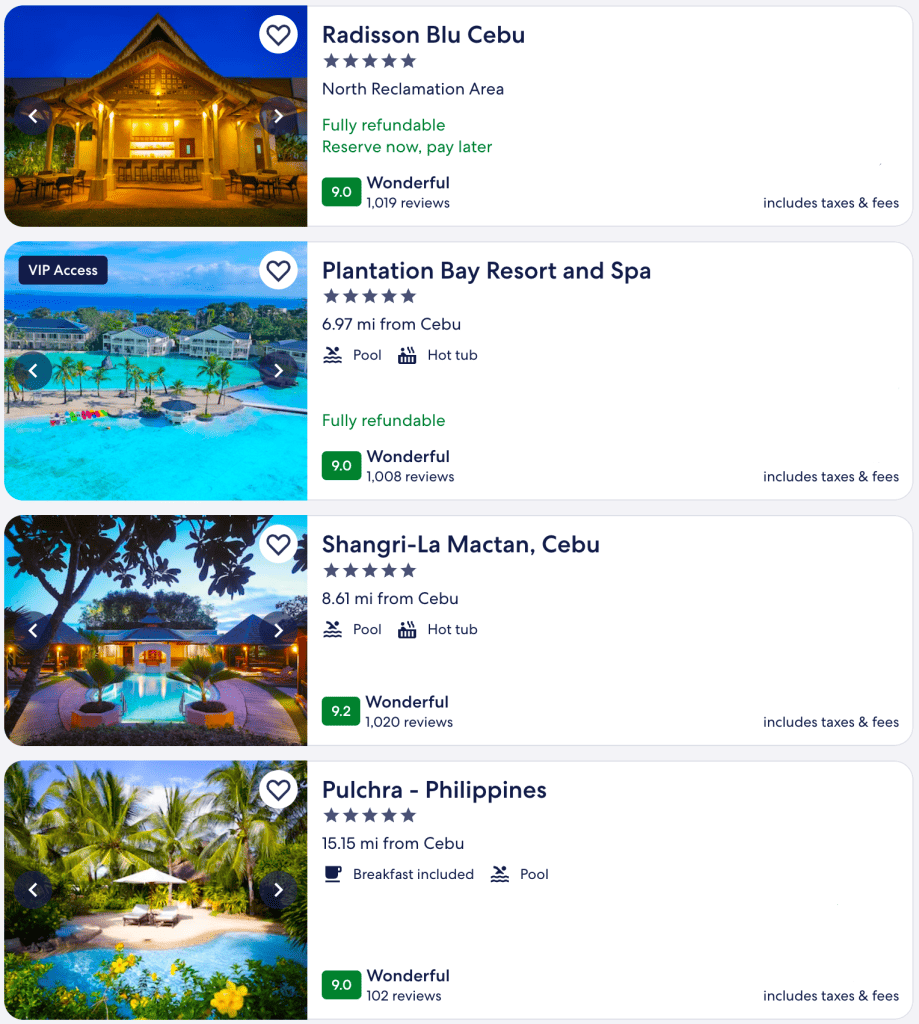
- Shangri-La's Mactan Resort and Spa: Located in Lapu-Lapu City on Mactan Island, this luxurious resort offers private beach access, world-class spa facilities, and a variety of dining options, making it perfect for those seeking a lavish beachfront stay.
- Radisson Blu Cebu: Situated in Cebu City, near the SM City Cebu Mall, Radisson Blu offers a blend of convenience and comfort. With its stylish rooms, superb dining, and excellent service, it's ideal for both business and leisure travelers.
- Abaca Boutique Resort: This exclusive boutique resort in Mactan Island is known for its tranquil atmosphere, exquisite dining, and personalized service, providing a perfect getaway for those seeking privacy and luxury.
- Crimson Resort and Spa Mactan: A stunning beachfront property in Lapu-Lapu City, Crimson Resort offers a tropical paradise with its elegant villas, infinity pool, and a range of recreational activities.
- Marco Polo Plaza Cebu: Perched on Nivel Hills, this hotel offers panoramic views of Cebu City and beyond. Known for its excellent cuisine and sophisticated ambiance, it's a popular choice for travelers seeking a blend of luxury and comfort.
- Plantation Bay Resort and Spa: This sprawling resort in Mactan features one of the largest privately-owned waterways in the world. With its lagoon-style pools and colonial-style buildings, it's a unique destination for families and couples.
- The Henry Hotel Cebu: For a more quirky and artistic stay, The Henry in Cebu City offers a boutique experience with individually themed rooms and a vibrant atmosphere, appealing to those who enjoy a blend of art, culture, and comfort.
- Movenpick Hotel Mactan Island Cebu: Known for its contemporary architecture and Mediterranean-inspired beachfront setting, this hotel in Lapu-Lapu City offers a lively ambiance perfect for travelers seeking a mix of relaxation and entertainment.
- Seda Ayala Center Cebu: Located in the heart of Cebu City's business district, this hotel is ideal for business travelers. With modern amenities, comfortable rooms, and easy access to Ayala Center Cebu, it combines convenience with elegance.
- Bluewater Maribago Beach Resort: This family-friendly resort in Mactan Island boasts of a natural beach, lush tropical gardens, and a variety of leisure facilities, making it an excellent choice for a relaxing and fun-filled vacation.
Each hotel on this list offers a unique slice of the Cebu experience, whether you're looking for luxury, culture, business convenience, or a family getaway. Always remember to check recent reviews and
current travel advisories when planning your trip, as facilities and services may change over time.
Cebu Tourist Spot Facts:
Section 1: Introduction to Cebu - A Gateway to Island Wonders
Cebu, an island province in the Philippines, stands as a beacon of culture, history, and natural beauty in the heart of the Visayas region. Renowned for its stunning landscapes, rich historical background, and vibrant city life, Cebu has cemented its status as a must-visit destination for travelers around the world. In this comprehensive introduction, we explore the multifaceted charm of Cebu City, the province's bustling capital, and the various facets that make it an irresistible tourist spot.
The Essence of Cebu City - A Melting Pot of Culture and History
Cebu City, known as the "Queen City of the South," is a harmonious blend of urban sophistication and ancestral heritage, making it a cornerstone of tourism in the Philippines. The city, with a history that spans several centuries, has evolved from a sleepy fishing village into a thriving metropolis. Today, Cebu City is not just a bustling urban center but also a repository of the Philippines' colonial past, visible in its well-preserved landmark Cebu Tourist Spots and centuries-old churches.
As a tourist spot, Cebu City offers an eclectic mix of experiences - from historical tours to modern-day adventures. Each corner of the city tells a story, each street echoes the footsteps of the past. The city's role in Philippine history is significant, having been the first Spanish settlement and the oldest city in the country. This rich historical tapestry is evident in the numerous tourist spots scattered throughout the city, each narrating a unique chapter of Cebu's past.
Cebu City - A Tourist Spot Like No Other
Cebu City's charm lies in its ability to offer a diverse range of experiences to its visitors. As a tourist spot, it strikes a perfect balance between historical significance and modern-day entertainment. The city's cultural and historical landmark Cebu Tourist Spots are complemented by contemporary attractions, including shopping malls, vibrant night markets, and an array of dining options that cater to every palate.
The city's infrastructure caters seamlessly to tourists, with a range of accommodations from luxury hotels to budget-friendly hostels. Furthermore, Cebu City's accessibility is enhanced by the Cebu Mactan International Airport, a gateway that connects Cebu to major cities around the world. This airport plays a pivotal role in bolstering Cebu's tourism, welcoming millions of visitors annually who are eager to explore the island's myriad attractions.
The Historical and Cultural Tapestry of Cebu City
At the heart of Cebu City's tourist appeal is its rich history, evident in a landmarks Cebu Tourist Spot such as Magellan's Cross, the Basilica Minore del Santo Niño, and Fort San Pedro. These sites not only offer a glimpse into the city's past but also serve as testament to the Philippines' colonial history. Magellan's Cross, in particular, is a revered symbol in Philippine history, marking the arrival of Christianity in the country.
Fort San Pedro, a military defense structure built by the Spaniards, stands as one of Cebu City's most iconic landmark Cebu Tourist Spots. This fort, now a museum, offers tourists a journey back in time, showcasing relics and artifacts that narrate the story of Cebu's colonial past. The fort's well-preserved walls and cannons are a favorite among history enthusiasts and casual tourists alike, making it a popular tourist attraction in the city.
The Vibrant Life of Downtown Cebu City
Downtown Cebu City is a bustling hub where the old meets the new. The streets are lined with a mix of Spanish-era buildings and modern structures, reflecting the city's journey through time. This area is a treasure trove for tourists, offering a plethora of experiences from shopping at local markets to exploring ancient churches. The downtown area is also home to some of the city's most beloved tourist spots, where one can experience the soul of Cebu in its lively festivals, colorful street dances, and the warm hospitality of its people.
The downtown area's charm is further accentuated during the Sinulog Festival, an annual cultural and religious festival held in honor of the Santo Niño. This festival transforms the city into a kaleidoscope of color and festivity, drawing tourists from all corners of the globe. The vibrant parade, rhythmic drumbeats, and spirited dances make it a highlight of Cebu's cultural calendar, showcasing the city's rich heritage and lively spirit.
Cebu City - A Culinary Journey
No tourist visit to Cebu City is complete without indulging in its culinary delights. The city is famous for its delectable cuisine, which is a fusion of native, Spanish, and Asian influences. Local specialties such as lechon (roasted pig), sutukil (a trio of seafood dishes), and Cebuano street food offer a gastronomic adventure that is both unique and memorable. Cebu's mangoes, considered some of the sweetest
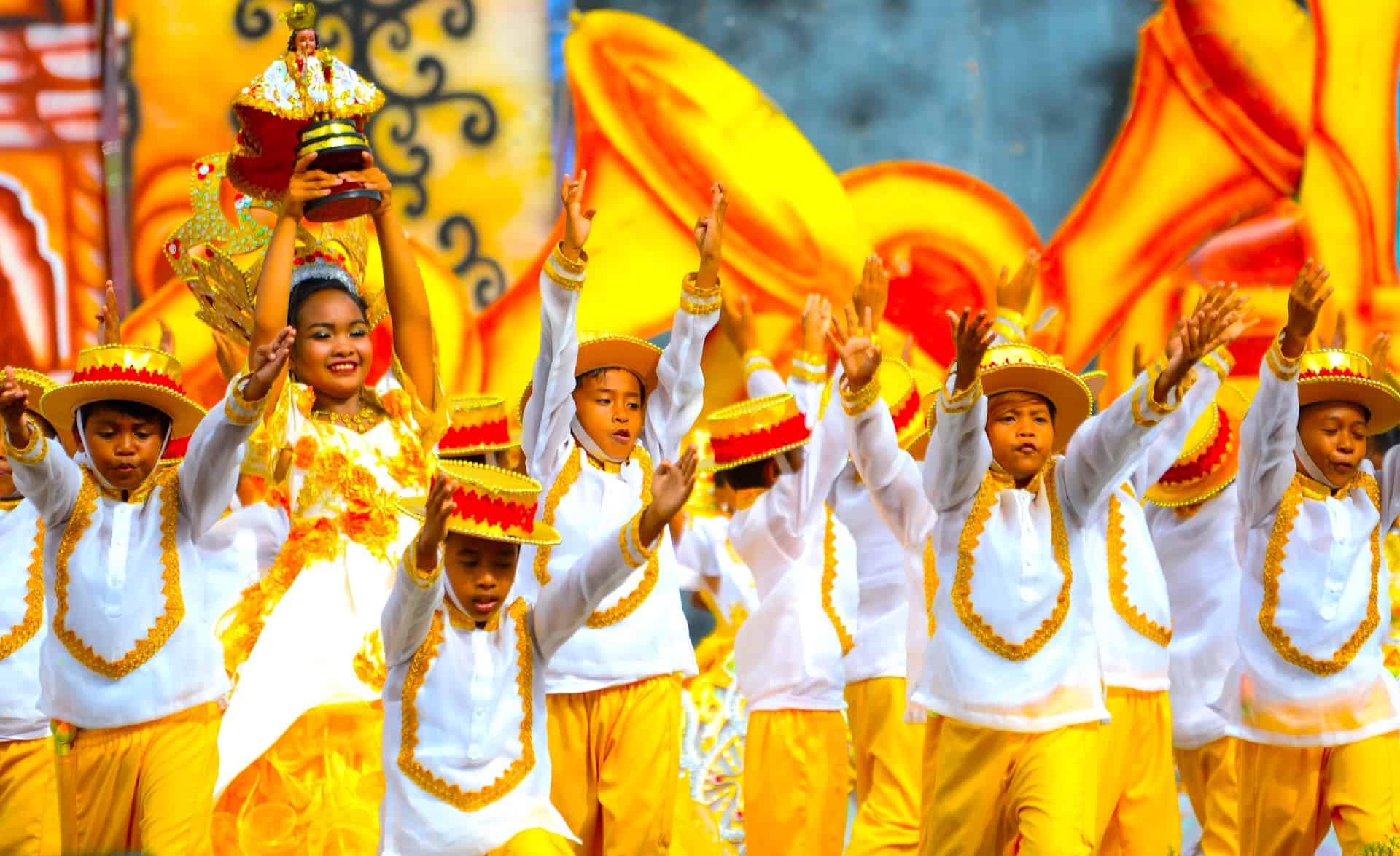
Section 2: The Heart of the Island: Cebu City's Charm
Delving deeper into the allure of Cebu, we focus on the heart of the island - Cebu City. This bustling metropolis is not just the capital of Cebu Province but a vibrant center of culture, history, and modernity. With a tapestry woven from centuries-old traditions and contemporary urban vibes, Cebu City stands as a testament to the resilience and dynamism of the Cebuano spirit. This section explores the numerous tourist spots within the city, painting a picture of its charm and why it's a must-visit destination.
The Melting Pot of Cultures in Cebu City
Cebu City, a harmonious blend of the old and new, is a showcase of the Philippines' rich cultural diversity. The city's streets are a vibrant mix of Spanish colonial architecture, Filipino traditions, and modern influences, making it a unique tourist spot. As the oldest city in the Philippines, Cebu City bears the hallmarks of its historical significance, with landmark Cebu Tourist Spots dating back to the Spanish colonial era. These historical treasures, juxtaposed with contemporary structures, give the city a distinct character that fascinates tourists.
The cultural fabric of Cebu City is rich and varied. Tourists can explore the city's museums, art galleries, and cultural centers to get a deeper understanding of Cebu's history and heritage. The city's commitment to preserving its cultural identity while embracing modernity is evident in its festivals, local crafts, and daily life, making it an intriguing destination for culturally inclined travelers.
Cebu City - A Hub of Tourist Attractions
When it comes to tourist spots, Cebu City is second to none. From historical landmark Cebu Tourist Spots to natural wonders, the city offers a plethora of attractions for every type of traveler. The Basilica Minore del Santo Niño, a 16th-century church, is a significant religious site and a must-visit for its historical and architectural value. Magellan's Cross, another emblematic site, holds a special place in the hearts of Filipinos and tourists alike.
For those interested in military history, Fort San Pedro, the oldest military defense structure in the Philippines, offers a glimpse into Cebu City's colonial past. This historic fort, with its ancient walls and cannons, stands as a proud reminder of the city's resilience. It's not just a tourist spot but a symbol of Cebu City's rich history.
Cebu City's downtown area, a bustling blend of old and new, is a paradise for explorers. Here, one can stroll through busy markets, visit centuries-old churches, and witness the vibrant city life. The downtown area exemplifies the city's ability to preserve its heritage while thriving in modernity. It's a place where tourists can immerse themselves in the local culture and experience the authentic Cebuano way of life.
The Gastronomic Delights of Cebu City
No exploration of Cebu City's tourist spots is complete without indulging in its culinary offerings. The city is renowned for its diverse cuisine, which reflects a blend of indigenous, Spanish, and Asian flavors. Local dishes such as lechon, known for its crispy skin and succulent meat, are a gastronomic delight. The city's street food scene offers an array of choices, from savory snacks to sweet delicacies, each telling a story of Cebu's culinary heritage.
Seafood lovers will find themselves at home in Cebu City, with fresh catch prepared in various styles, from grilled to stewed. The city's restaurants and eateries offer a range of dining experiences, from upscale dining to casual street-side eateries, ensuring that there's something for every palate and budget.
The Festive Spirit of Cebu City
Cebu City's tourist appeal is further enhanced by its festive spirit. The Sinulog Festival, held annually in honor of the Santo Niño, is a vibrant display of Cebuano culture and religiosity. This grand celebration, marked by colorful parades, traditional dances, and lively street parties, attracts tourists from across the globe. It's an event that showcases the city's rich cultural tapestry and the warmth of its people.
The festival is not just a tourist attraction but a reflection of Cebu City's deep-rooted traditions and its people's devotion. The rhythmic beats of the drums, the elaborate costumes, and the spirited dances create an atmosphere of joy and celebration, making it an unforgettable experience for visitors.
Cebu City's Thriving Nightlife and Shopping Scene
As the sun sets, Cebu City transforms into a vibrant hub of nightlife and entertainment. The city's bars, clubs, and lounges offer a variety of experiences, from live music to DJ sets, catering to both locals and tourists. The nightlife in Cebu City is a blend of sophistication and fun, making it an ideal spot for those looking to unwind and enjoy the evening.
For shopaholics, Cebu City presents an array of shopping options. From sprawling malls offering international brands to local markets selling handmade crafts and souvenirs, the city satisfies all shopping desires. These shopping spots are not just places to buy things but also spaces to experience Cebu's modern urban lifestyle.
Cebu City, with its unique blend of history, culture, and modernity, stands as a shining example of what makes Cebu a remarkable tourist destination. The city's tourist spots, culinary delights, festive atmosphere, vibrant nightlife, and shopping scenes come together to create a rich, multifaceted experience for visitors. It's a city that proudly displays its heritage while embracing the new, a city that beckons tourists with open arms, offering them a glimpse into the heart and soul of Cebu.
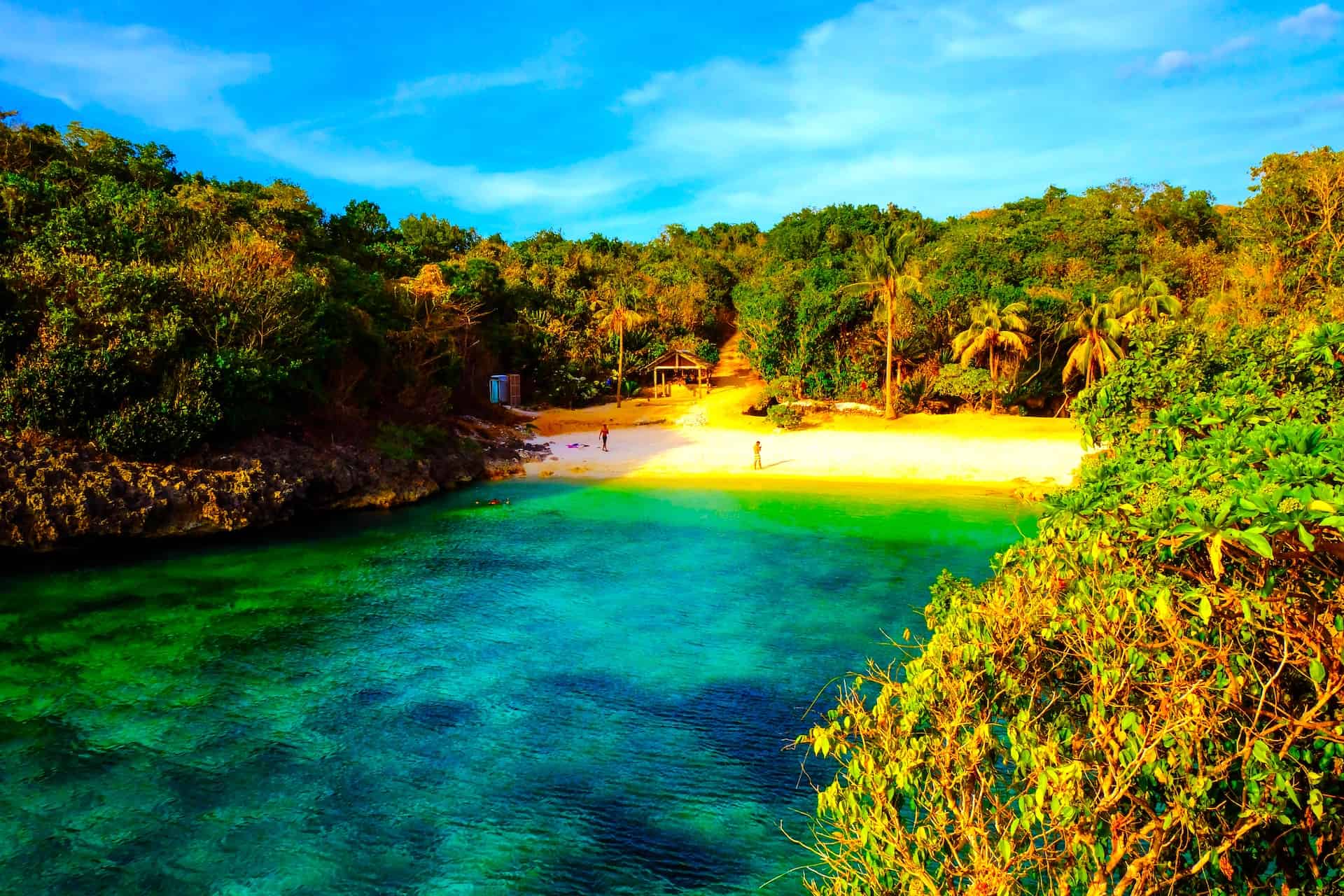
Section 3: Cebu Island: A Tropical Paradise
Cebu Island, a gem in the heart of the Visayas, is a place of extraordinary natural beauty and cultural richness. This section delves into the many facets of Cebu Island, exploring its stunning landscapes, vibrant traditions, and the plethora of activities that make it an ideal destination for every kind of traveler. From its pristine beaches to its lush highlands, Cebu Island promises a journey filled with adventure, relaxation, and cultural immersion.
Cebu Island - An Embodiment of Natural Beauty
Cebu Island is a testament to the Philippines' natural beauty, boasting a diverse range of landscapes that captivate the heart of every tourist. The island's coastline is adorned with idyllic white sand beaches, crystal-clear waters, and vibrant marine life, making it a paradise for beach lovers and snorkeling enthusiasts. The inland areas of Cebu Island are just as enchanting, with lush mountains, rolling hills, and hidden waterfalls waiting to be explored.
For tourists seeking a tranquil escape, the white sand beaches of Cebu Island offer a serene retreat from the hustle and bustle of city life. These beaches are not just beautiful but are also hubs for various water sports and activities. Whether it’s sunbathing, swimming, or diving into the rich underwater world, the beaches of Cebu Island provide an ideal setting for relaxation and adventure.
Exploring the Heart of Cebu Island
The charm of Cebu Island goes beyond its natural wonders. The island is steeped in history and culture, with a heritage that reflects the various influences that have shaped it over the centuries. Tourists can explore ancient churches, historic landmark Cebu Tourist Spots, and colorful festivals that showcase the island's rich cultural tapestry.
One of the highlights for tourists on Cebu Island is the opportunity to immerse themselves in the local culture. The island's towns and villages are home to vibrant communities where traditional customs and practices are still alive. Visiting these communities offers a glimpse into the authentic Cebuano way of life, enriching the tourist experience with cultural insights and interactions.
The Adventure Side of Cebu Island
Cebu Island is a haven for adventure seekers. The island's varied terrain offers numerous opportunities for outdoor activities, from hiking and mountain biking to canyoneering and zip-lining. The Mantalongon Mountain Range, known for its scenic beauty and challenging trails, is a popular spot for hikers and nature enthusiasts. The thrill of conquering these peaks is matched by the breathtaking views and the sense of achievement that comes with it.
For those who crave water-based adventures, Cebu Island does not disappoint. The island's surrounding waters are ideal for a range of activities, including kayaking, paddleboarding, and jet skiing. The marine life around Cebu Island, particularly around Mactan Island and Pescador Island, offers some of the best snorkeling and diving experiences in the Philippines. The vibrant coral reefs and diverse marine life make each dive an unforgettable encounter.
Cebu Island's Culinary Journey
The gastronomic landscape of Cebu Island is as diverse as its natural and cultural offerings. The island's cuisine is a delicious blend of local flavors, Spanish influences, and Asian fusion, creating a unique culinary experience for tourists. From the famous Cebuano lechon to the fresh seafood dishes and exotic fruits, the island's food scene is a delight for food lovers.
Local markets and eateries on Cebu Island provide an authentic taste of Cebuano cuisine. Tourists can indulge in a variety of street foods, traditional dishes, and innovative culinary creations. The island's chefs and cooks take pride in their culinary heritage, often using fresh, locally-sourced ingredients to create dishes that are not only delicious but also tell the story of Cebu's rich gastronomic history.
The Serenity of Cebu Island's Highlands
Away from the coastline, the highlands of Cebu Island offer a different kind of allure. The cooler climate, lush vegetation, and panoramic views provide a peaceful escape from the tropical heat. The highlands are home to charming resorts, organic farms, and tranquil retreats, ideal for tourists looking for a serene and rejuvenating experience.
In these highland areas, tourists can engage in activities like bird watching, nature photography, and leisurely walks through picturesque landscapes. The combination of natural beauty, fresh air, and the quietude of the highlands makes it a perfect spot for relaxation and contemplation.
Cebu Island, with its stunning landscapes, rich culture, adventurous activities, delicious cuisine, and tranquil highlands, offers a comprehensive tourist experience. It's an island that caters to all tastes and preferences, ensuring that every visitor leaves with memories that last a lifetime. Whether one seeks adventure, relaxation, cultural immersion, or culinary delights, Cebu Island has something special to offer, making it a true tropical paradise.
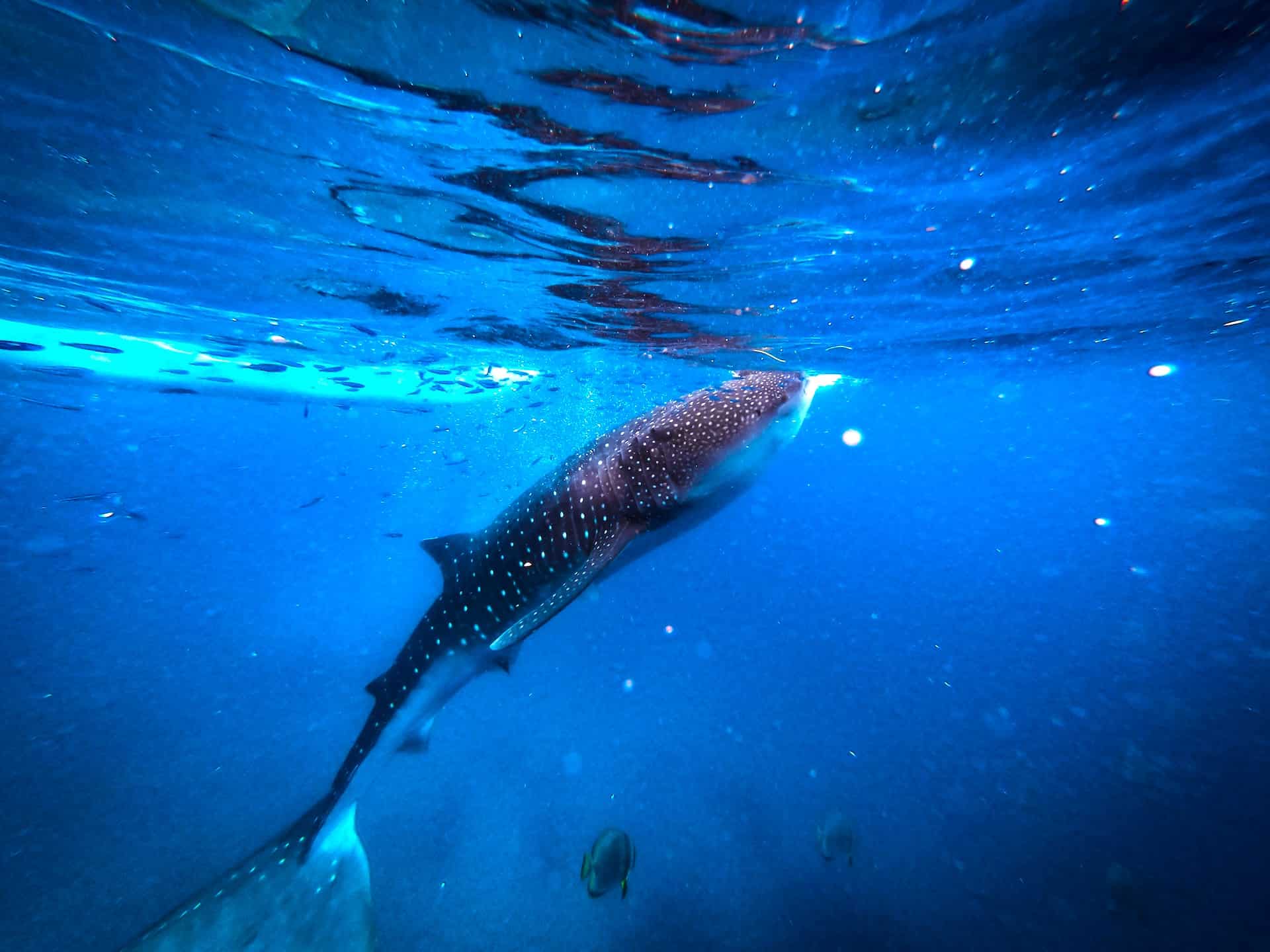
Section 4: Marine Wonders: Cebu's Aquatic Attractions
Cebu, an island blessed with a wealth of natural resources, is surrounded by the rich waters of the Visayan Sea. These waters are not just vital to the livelihoods of many Cebuanos but are also a treasure trove of marine biodiversity, attracting tourists from all corners of the globe. This section explores the aquatic attractions that make Cebu a premier destination for water enthusiasts and nature lovers alike.
The Allure of Cebu Ocean Park
Cebu Ocean Park, the first marine park in Cebu and one of the largest in the Philippines, serves as a gateway to the underwater world of the Visayan Sea. As a tourist spot, it offers an immersive experience that educates and entertains. Visitors can marvel at a wide variety of marine species, from colorful fish to majestic rays, in its large aquariums. The park also offers interactive experiences like diving and snorkeling, allowing guests to get up close with marine life in a controlled environment.
The Oceanarium, a highlight of Cebu Ocean Park, takes visitors on a journey through the depths of the ocean. With its state-of-the-art facilities and expertly curated exhibits, the Oceanarium provides a glimpse into the vibrant marine life that thrives beneath the waves of the surrounding seas. This attraction is not just about entertainment; it also plays a crucial role in marine conservation, educating the public about the importance of preserving our oceans and the creatures that inhabit them.
Mactan Island: A Diver's Paradise
Mactan Island, just off the coast of Cebu, is renowned for its crystal-clear waters and vibrant coral reefs, making it a popular spot for diving and snorkeling. The island's underwater world is a kaleidoscope of colors, home to a diverse array of marine species. From seasoned divers to beginners, Mactan Island offers a range of diving experiences to suit all levels of expertise.
The marine sanctuaries around Mactan are teeming with life, from schools of tropical fish to rare and exotic species. Diving in these waters, one can encounter everything from small, colorful nudibranchs to larger creatures like turtles and reef sharks. The experience of being surrounded by such an abundance of marine life is not only exhilarating but also humbling, reminding us of the vast and intricate ecosystem that exists beneath the sea.
Pescador Island: A Snorkeling Haven
Not far from the shores of Cebu lies Pescador Island, another jewel in the Visayan Sea. Renowned for its pristine waters and abundant marine life, Pescador Island is a favorite among snorkelers and divers. The island's surrounding coral reef is a vibrant underwater landscape, bustling with activity and life.
Snorkeling around Pescador Island is an experience like no other. The clear waters offer excellent visibility, revealing a world of coral gardens teeming with fish of every shape, size, and color. The island's waters are also known for the occasional sightings of larger marine creatures, such as whale sharks and manta rays, adding to the thrill of the adventure.
The Marine Adventures of Cebu
Beyond diving and snorkeling, Cebu's waters offer a plethora of other marine adventures. Tourists can indulge in water sports like jet skiing, parasailing, and kiteboarding. For a more leisurely experience, island-hopping tours are available, taking visitors to various islands and beaches around Cebu, each with its unique charm.
Boat tours also provide opportunities to witness the rich marine biodiversity of Cebu. These tours often include dolphin watching, where tourists can see these playful creatures in their natural habitat. For those looking for a unique experience, swimming with whale sharks in Oslob, a small coastal town in South Cebu, is a must-try. This activity allows tourists to interact with the gentle giants of the sea, creating memories that last a lifetime.
Conservation Efforts in Cebu's Marine Environment
While Cebu's marine attractions offer unparalleled experiences, they also bring to light the importance of conservation. The fragile marine ecosystems around the island face threats from overfishing, pollution, and climate change. Recognizing this, various conservation initiatives have been put in place to protect and preserve Cebu's marine life.
Cebu Ocean Park, along with other conservation organizations, plays a significant role in these efforts. Through education and awareness campaigns, they aim to inspire visitors to become stewards of the ocean. Sustainable tourism practices are also encouraged, ensuring that the beauty of Cebu's marine environment can be enjoyed by future generations.
Cebu's marine wonders are an integral part of its tourist appeal. From the educational experiences at Cebu Ocean Park to the exhilarating adventures in the waters of Mactan Island and Pescador Island, there is something for everyone in Cebu's aquatic playground. These attractions not only provide enjoyment and excitement but also foster a deeper appreciation for the natural world and the need to protect it. Cebu's waters are a testament to the island's natural beauty and the rich biodiversity that must be cherished and preserved.
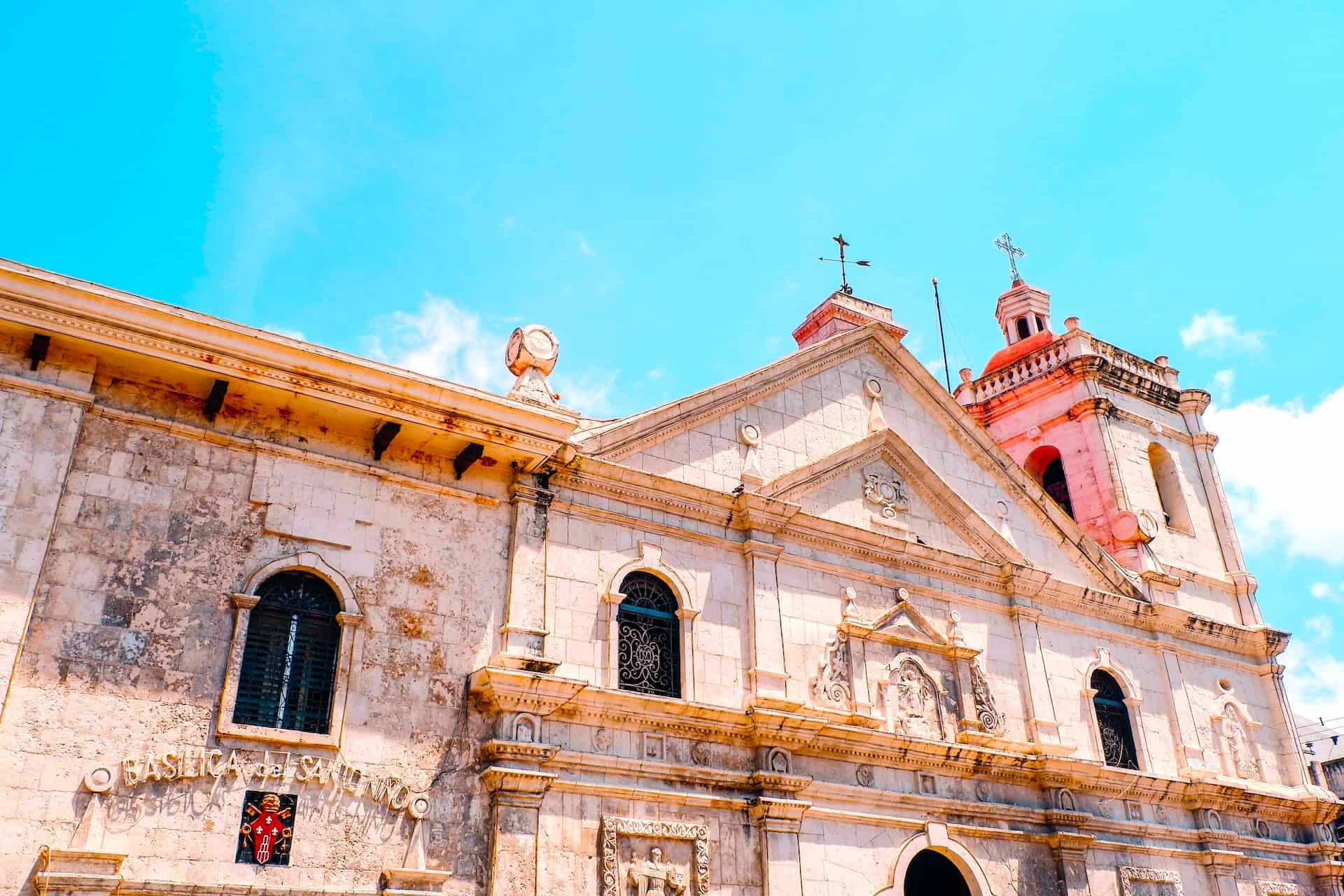
Section 5: Stepping Back in Time: Fort San Pedro and Historical Sites
Cebu, an island steeped in history, offers a journey back in time through its remarkable historical sites. Among these, Fort San Pedro holds a special place as a testament to the island's rich past. This section explores Fort San Pedro and other historical landmark Cebu Tourist Spots, each telling a story of the island's colorful and diverse heritage.
Fort San Pedro: A Glimpse into Cebu's Colonial Past
Fort San Pedro, the oldest military defense structure in the Philippines, stands as a symbol of Cebu's historical significance. Built by the Spaniards in the 17th century, this fort has witnessed the many changes that have shaped Cebu over the centuries. Today, it serves as a museum and a popular tourist spot, offering a glimpse into the island's colonial history.
Visitors to Fort San Pedro can explore its well-preserved walls, bastions, and cannons, which speak volumes about the military architecture of the time. The fort also houses a museum displaying artifacts, paintings, and documents that provide insights into the life and times of the Spanish era. Walking through the corridors of Fort San Pedro, tourists can almost hear the echoes of the past, making it a must-visit destination for history enthusiasts.
Cebu's Historical Landmarks: Beyond Fort San Pedro
Cebu's history is not confined to Fort San Pedro alone. The island is dotted with numerous historical landmark Cebu Tourist Spots, each with its own story. The Basilica Minore del Santo Niño, one of the oldest Roman Catholic churches in the Philippines, is a significant religious site in Cebu. Home to the revered image of the Santo Niño, the church is not only a place of worship but also a symbol of the deep-rooted Catholic faith in the Philippines.
Another noteworthy historical site is Magellan's Cross, a symbol of Christianity's introduction to the Philippines. The cross, housed in a chapel, is believed to be planted by Ferdinand Magellan in 1521. This landmark Cebu Tourist Spot is a popular tourist spot, attracting visitors keen on understanding the religious and historical roots of Cebu.
Exploring the Heart of Cebu City's History
The heart of Cebu City is a treasure trove of historical sites. Walking through the streets of downtown Cebu City, one can encounter structures and monuments that tell the story of the city's past. From the heritage houses in the Parian district to the Cebu Metropolitan Cathedral, each site offers a unique perspective on Cebu's history.
The Yap Sandiego Ancestral House, one of the oldest houses in the Philippines, is a living museum showcasing the lifestyle of the early Cebuano Chinese merchants. The house, with its antique furnishings and intricate architecture, provides a window into the past, making it an intriguing stop for tourists.
The Role of Cebu's History in Modern Times
Cebu's historical sites are not just relics of the past but play an active role in the island's present. They are a source of pride for the Cebuanos, reminding them of their rich heritage and the journey their island has undergone. These sites also contribute significantly to Cebu's tourism, drawing visitors from around the world who are interested in exploring the island's historical and cultural roots.
Educational tours and cultural programs often incorporate visits to these historical sites, allowing tourists and locals alike to gain a deeper appreciation of Cebu's past. Events like heritage walks and historical reenactments bring Cebu's history to life, creating a dynamic link between the past and the present.
Preserving Cebu's Historical Heritage
The preservation of Cebu's historical sites is a matter of great importance. Efforts are being made by the government and various cultural organizations to maintain and restore these landmark Cebu Tourist Spots. Preservation is not just about maintaining structures but also about keeping the stories and traditions associated with these sites alive.
Tourists visiting these historical sites play a role in their preservation by showing interest and respect for Cebu's heritage. Responsible tourism practices, such as adhering to guidelines and supporting local heritage initiatives, contribute to the conservation of these historical treasures.
Fort San Pedro and the myriad of historical sites across Cebu offer a journey into the island's past, showcasing its rich history and cultural diversity. These landmark Cebu Tourist Spots are not just tourist spots but are pivotal in understanding the evolution of Cebu and its people. By exploring these sites, tourists can appreciate the depth and breadth of Cebu's heritage, making their visit to the island a truly enriching experience.
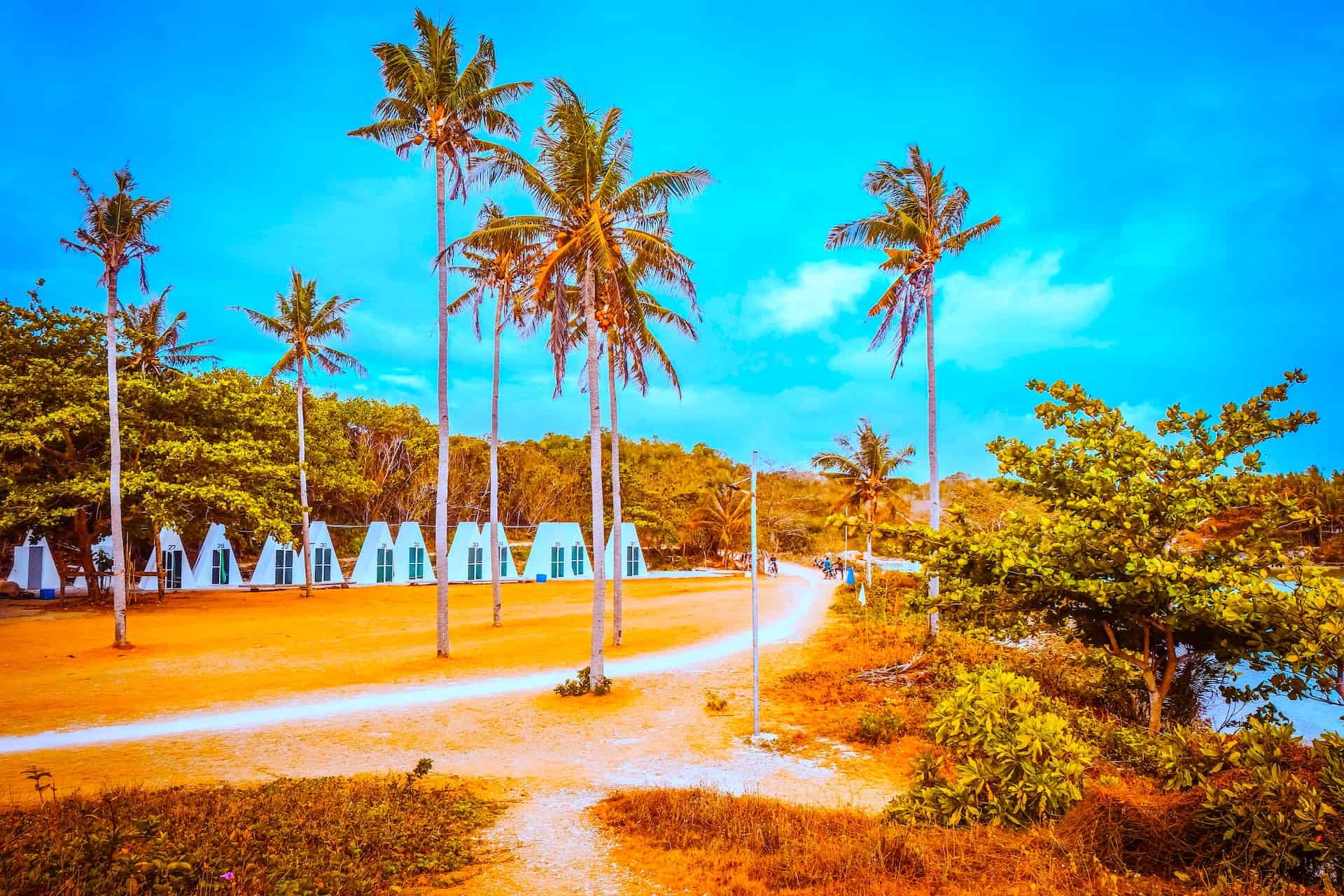
Section 6: Southern Charms: Exploring South Cebu
The southern part of Cebu Island, known for its unique blend of natural beauty, adventure, and cultural experiences, offers a world of exploration for visitors. This section delves into the treasures of South Cebu, highlighting its diverse attractions, from stunning natural landscapes to rich cultural heritage and thrilling adventures.
The Natural Splendors of South Cebu
South Cebu is a paradise for nature enthusiasts and adventure seekers alike. The area is renowned for its breathtaking landscapes, encompassing everything from pristine beaches to magnificent waterfalls and imposing mountains. The southern coastline boasts some of the most beautiful beaches on the island, with white sand shores and crystal-clear waters that invite relaxation and water sports.
One of the most iconic natural attractions in South Cebu is the Kawasan Falls, a series of three waterfalls known for their milky blue pools and lush surrounding scenery. This natural wonder is not just a visual treat but also offers a refreshing escape, with opportunities for swimming and canyoneering for the more adventurous.
Whale Shark Encounters in Oslob
Oslob, a small coastal town in South Cebu, has gained international fame for its whale shark encounters. This unique experience allows tourists to swim and snorkel alongside these gentle giants in their natural habitat. The practice of whale shark tourism in Oslob has put South Cebu on the map as a must-visit destination for wildlife enthusiasts.
While the whale shark encounters in Oslob offer an unforgettable experience, they also raise awareness about marine conservation. Tourists are educated about the importance of preserving these magnificent creatures and their environment, contributing to the efforts of sustainable tourism in the region.
The Cultural Tapestry of South Cebu
South Cebu's allure extends beyond its natural attractions to its rich cultural heritage. The area is dotted with historic landmark Cebu Tourist Spots, including centuries-old churches and ancestral houses, which reflect the Spanish colonial influence and the deep-rooted Catholic faith in the region.
The town of Boljoon, for example, is home to the Patrocinio de Maria Church, one of the oldest churches in Cebu. This national historical landmark Cebu Tourist Spot, with its well-preserved architecture and religious artifacts, offers a glimpse into the historical and cultural fabric of South Cebu.
Adventure Awaits in South Cebu
For thrill-seekers, South Cebu is a playground of adventure. The rugged terrain and varied landscapes provide the perfect setting for a range of outdoor activities. Canyoneering in the canyons of Badian, hiking to the peak of Osmeña Peak, and exploring the hidden caves and waterfalls are just a few of the exhilarating experiences that await in South Cebu.
These adventures not only offer a rush of adrenaline but also allow visitors to connect with nature and experience the island's beauty from a different perspective. The combination of natural wonders and adventurous activities makes South Cebu an irresistible destination for those seeking excitement and exploration.
Sustainable Tourism in South Cebu
As South Cebu continues to attract tourists, the importance of sustainable tourism practices becomes increasingly crucial. Efforts are being made to ensure that tourism development in the area is balanced with environmental conservation and community welfare.
Eco-tourism initiatives, community-based tourism projects, and responsible travel guidelines are being promoted to protect South Cebu's natural and cultural assets. These measures aim to provide a sustainable future for tourism in the region, ensuring that the beauty and charm of South Cebu can be enjoyed by future generations.
South Cebu, with its stunning natural landscapes, rich cultural heritage, and thrilling adventure opportunities, offers a diverse and fulfilling experience for visitors. From the serene beauty of its beaches to the exhilaration of its outdoor activities and the depth of its cultural offerings, South Cebu is a destination that caters to a wide array of interests and preferences. It is a testament to the diverse beauty and spirit of Cebu Island, inviting tourists to explore and fall in love with its southern charms.
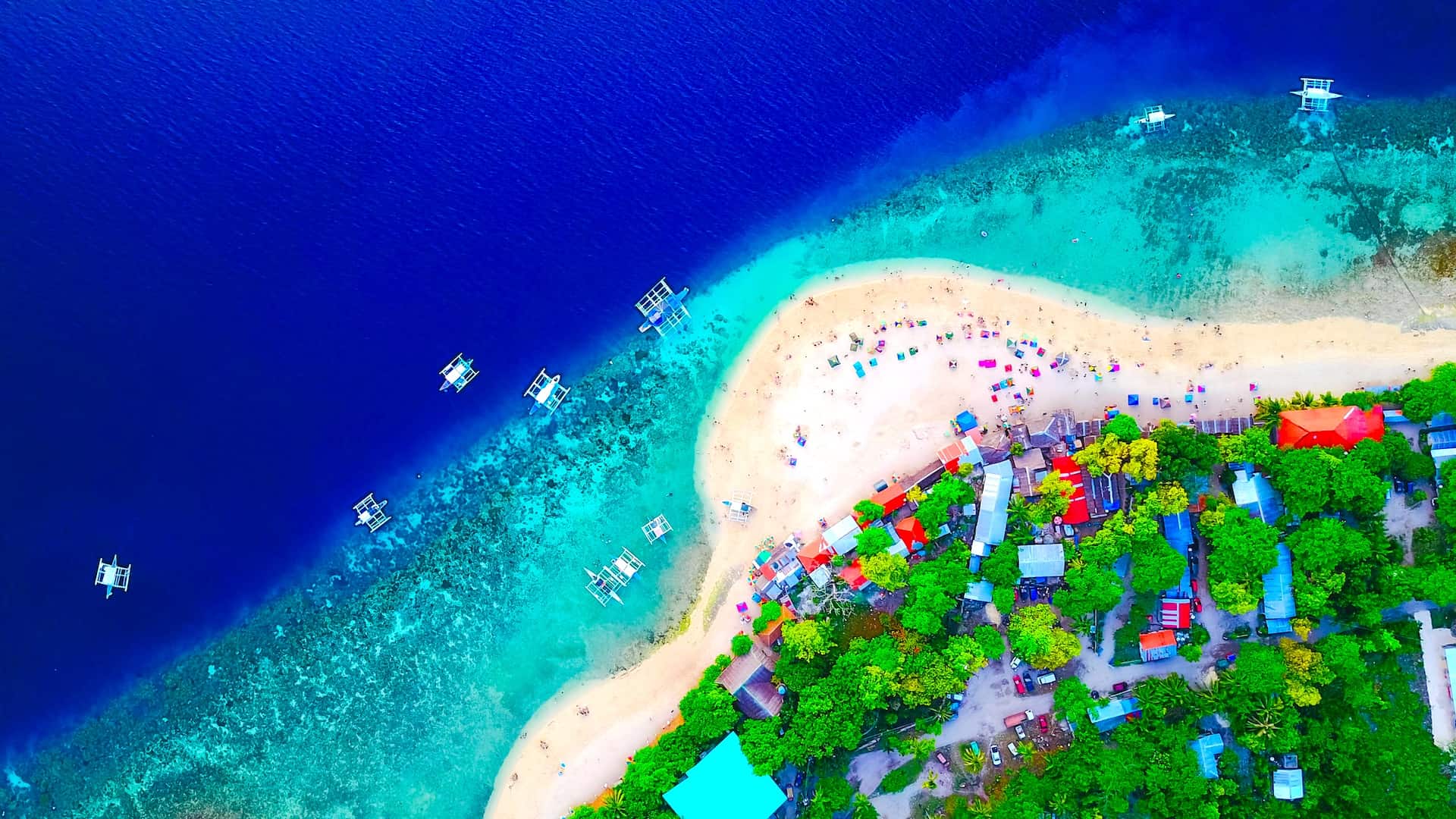
Section 7: Island Escapades: Bantayan and Beyond
Bantayan Island, a serene and picturesque island located in the northern part of Cebu, is a haven of tranquility and natural beauty. This section explores the unique charm of Bantayan Island and the array of experiences it offers, making it a cherished destination for both local and international tourists.
The Idyllic Charm of Bantayan Island
Bantayan Island is renowned for its pristine beaches, crystal-clear waters, and laid-back atmosphere. The island's white sand beaches are among the finest in Cebu, offering a perfect setting for relaxation and rejuvenation. The gentle waves lapping against the shore, the rustling of palm trees, and the stunning sunsets create a postcard-perfect scene that captivates every visitor.
Apart from its stunning beaches, Bantayan Island is also known for its rich cultural heritage. The island's towns, such as Santa Fe, Bantayan, and Madridejos, are dotted with historic structures, including old churches and heritage houses that reflect the island's history and traditions. These cultural landmark Cebu Tourist Spots add depth to the island's tourist appeal, providing insights into the local way of life and history.
Island Hopping Adventures around Bantayan
One of the must-do activities when visiting Bantayan Island is island hopping. The surrounding waters are dotted with smaller islands and islets, each with its own unique charm. These include Virgin Island, known for its powdery white sand and secluded ambiance, and Hilantagaan Island, famous for its rich marine life and coral gardens, perfect for snorkeling and diving enthusiasts.
Island hopping tours provide an opportunity to explore these hidden gems and experience the diverse marine ecosystems of the region. The joy of discovering secluded beaches, swimming in crystal-clear waters, and enjoying the serenity of these untouched islands makes for an unforgettable experience.
Bantayan Island: A Culinary Journey
Bantayan Island is not just a feast for the eyes but also a delight for the palate. The island's cuisine is a reflection of its rich marine resources and culinary traditions. Fresh seafood is a staple in the local diet, with dishes like kinilaw (raw fish salad), grilled fish, and seafood stews being popular among locals and tourists alike.
The island's eateries and restaurants offer a range of dining experiences, from simple beachside grills to more sophisticated dining establishments. Sampling the local cuisine is an integral part of the Bantayan Island experience, allowing visitors to savor the flavors of the island.
Sustainable Tourism in Bantayan Island
As tourism continues to grow in Bantayan Island, the focus on sustainable and responsible tourism practices becomes increasingly important. Efforts are being made to preserve the natural beauty and cultural integrity of the island while promoting economic development.
Eco-friendly initiatives, such as beach clean-ups, coral reef protection programs, and community-based tourism projects, are being implemented to ensure the long-term sustainability of tourism on the island. These efforts aim to create a balance between enjoying the natural and cultural riches of Bantayan Island and preserving them for future generations.
Bantayan Island, with its pristine beaches, rich cultural heritage, diverse marine life, and delicious cuisine, offers a holistic and enriching tourist experience. It stands as a testament to the natural beauty and charm of the Cebu region. The island's commitment to sustainable tourism ensures that its unique allure remains preserved, making it a destination that continues to enchant visitors year after year.
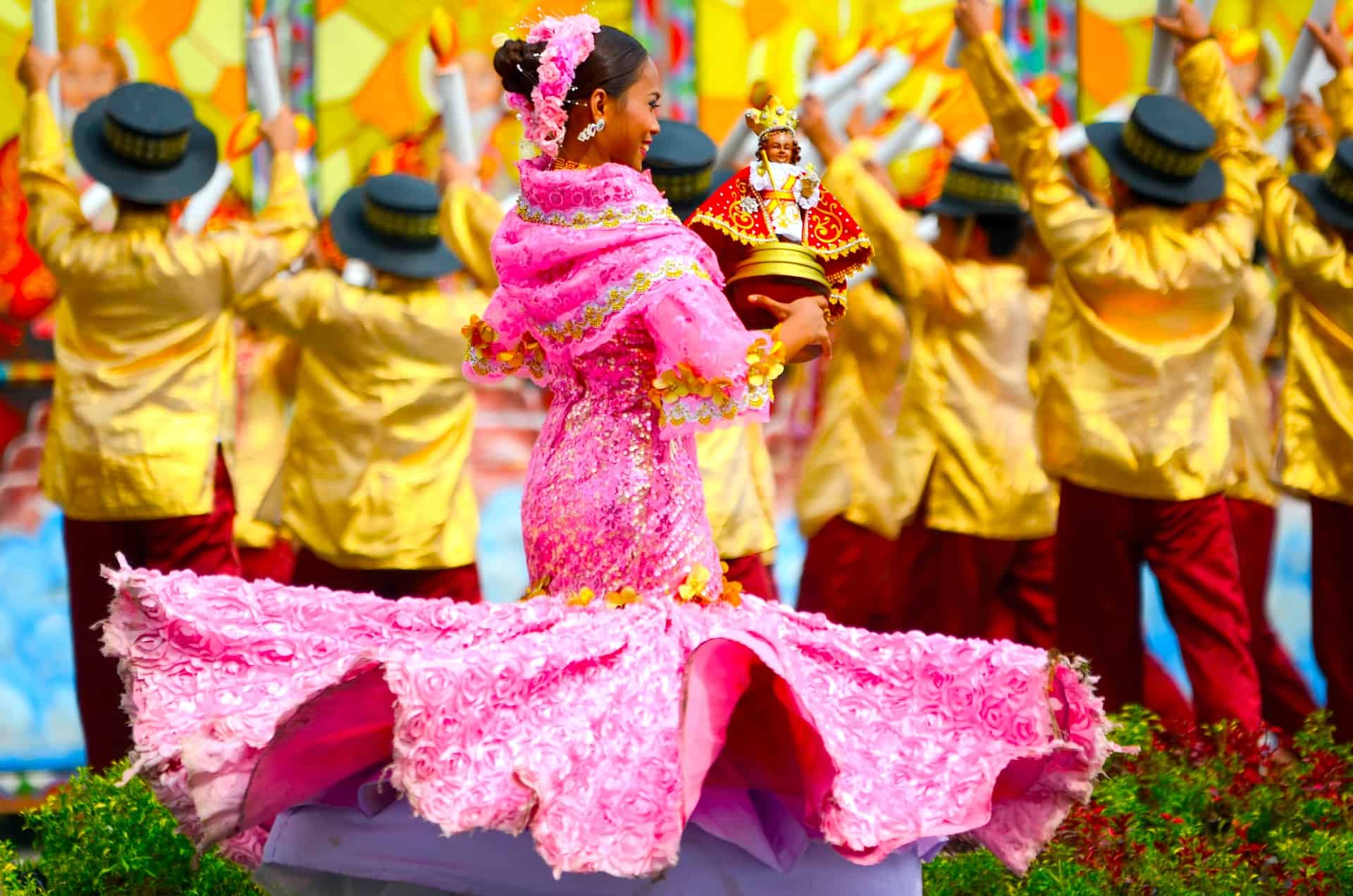
Section 8: Air Access: Cebu Mactan International Airport
The Cebu Mactan International Airport stands as the gateway to the myriad wonders of Cebu and its surrounding islands. This section explores the significance of this airport in bolstering Cebu's tourism, its facilities, and the role it plays in connecting the island to the rest of the world.
The Gateway to Cebu's Wonders
Cebu Mactan International Airport, located on Mactan Island, is the second busiest airport in the Philippines. It serves as a crucial hub for both domestic and international flights, making Cebu one of the most accessible destinations in the country. The airport's strategic location facilitates the influx of tourists, contributing significantly to the growth and development of Cebu's tourism industry.
The airport is not just a point of entry but a representation of Cebu's hospitality. From the moment visitors land, they are greeted with the warmth and friendliness characteristic of the Cebuano culture. The airport's modern facilities and efficient services ensure a comfortable and convenient experience for travelers, setting the tone for their stay in Cebu.
World-Class Facilities and Services
Cebu Mactan International Airport has undergone significant upgrades and expansions to cater to the increasing number of tourists. The airport boasts world-class facilities, including a new terminal dedicated to international flights. This terminal, with its sleek design and state-of-the-art amenities, offers a comfortable and seamless travel experience.
The airport is equipped with a range of services to meet the needs of travelers, including currency exchange, information desks, dining options, and shopping outlets. The lounges and waiting areas are designed for comfort, providing a relaxing environment for passengers during transit.
Connecting Cebu to the World
Cebu Mactan International Airport plays a vital role in connecting Cebu to major cities across the globe. The airport hosts a number of international airlines, offering direct flights to and from key destinations in Asia, the Middle East, and beyond. This connectivity has opened doors for international tourism, making Cebu a popular destination for travelers from around the world.
The airport's expansion of routes and partnerships with various airlines has also facilitated easier and more affordable travel to Cebu. This accessibility has been instrumental in boosting the island's tourism economy, attracting a diverse range of tourists, from backpackers to luxury travelers.
A Hub for Island Connectivity
Beyond international travel, Cebu Mactan International Airport serves as a hub for domestic flights to various parts of the Philippines. This makes it an ideal starting point for travelers looking to explore not only Cebu but also other destinations in the country. The airport's domestic terminal offers frequent flights to major cities and popular tourist spots in the Philippines, enhancing the travel experience within the archipelago.
The connectivity provided by the airport extends to sea travel as well. Its proximity to seaports allows for easy access to ferry services, connecting Mactan Island to Cebu City and other neighboring islands. This multimodal connectivity is a significant advantage for tourists planning to explore the wider region.
Sustainable Development and Community Impact
The development of Cebu Mactan International Airport is aligned with sustainable practices to minimize its environmental impact. Initiatives such as energy-efficient systems, waste management, and green spaces are integrated into the airport's operations. These efforts reflect the broader commitment to sustainable tourism in Cebu.
Furthermore, the airport plays a significant role in the local community. It provides employment opportunities and stimulates economic growth in the region. The airport's success is intertwined with the prosperity of the local community, making it a key player in the socio-economic development of Cebu.
Cebu Mactan International Airport is more than just an airport; it is the welcoming gateway to the enchanting island of Cebu and its neighboring regions. With its world-class facilities, extensive connectivity, and commitment to sustainable practices, the airport plays a pivotal role in the growth of Cebu's tourism. It stands as a symbol of progress and hospitality, inviting the world to discover the beauty and culture of Cebu.
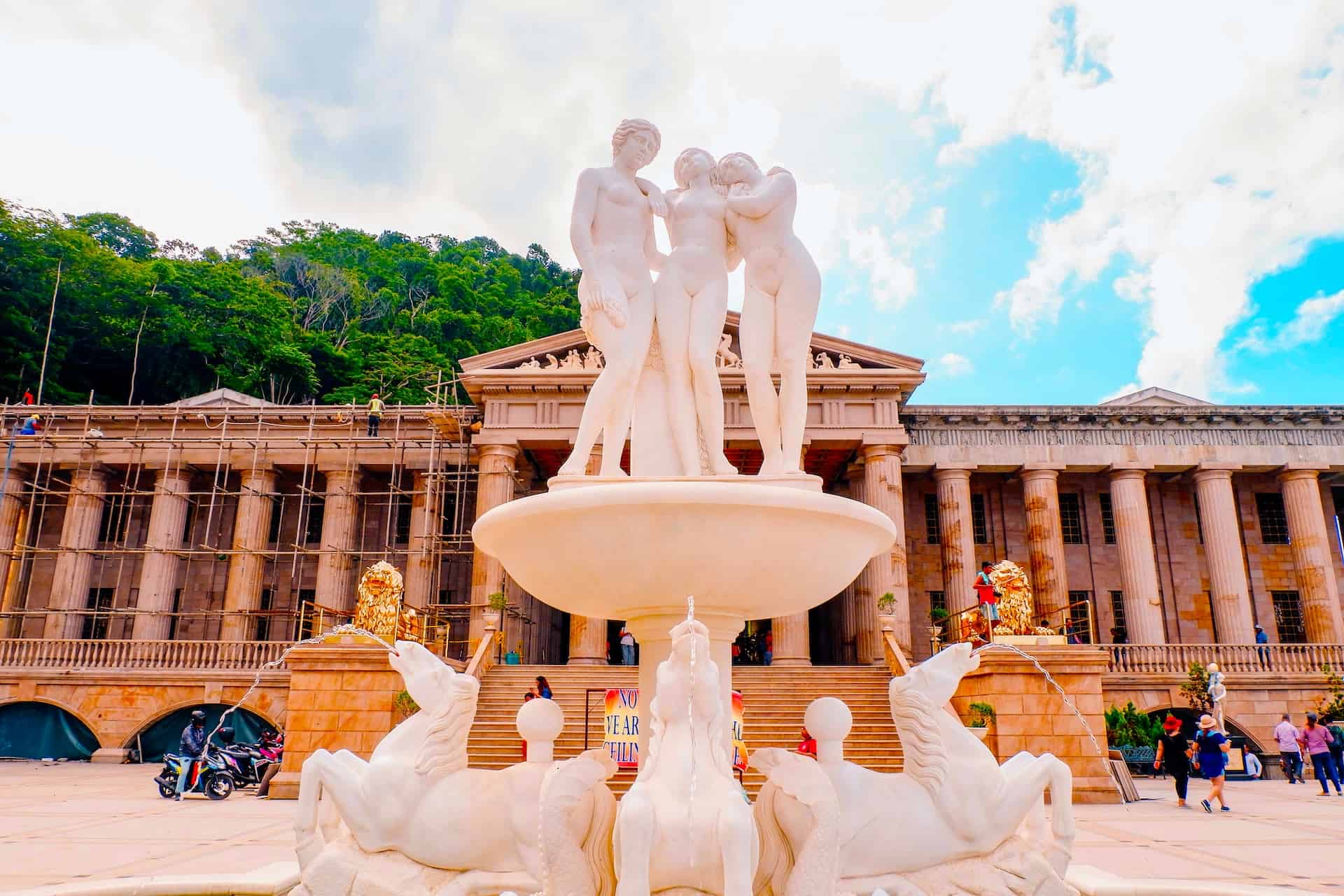
Section 9: Cebu City Tourist Spot Highlights
Cebu City, the vibrant heart of Cebu Island, is rich with tourist spots that cater to a variety of interests, from historical landmark Cebu Tourist Spots and cultural centers to modern attractions and natural wonders. This section highlights some of the must-visit tourist spots in Cebu City, showcasing the diversity and richness of this dynamic city.
Historical Landmarks and Cultural Heritage
Cebu City's historical and cultural heritage is one of its most significant attractions. The Basilica Minore del Santo Niño, dating back to the 16th century, is not only a religious landmark Cebu Tourist Spot but also a historical treasure. Housing the oldest religious relic in the Philippines, it attracts thousands of pilgrims and tourists yearly.
Another key historical site is Magellan's Cross, a symbol of the introduction of Christianity in the Philippines. The cross, housed in a small chapel, is a significant reminder of the country's colonial past and a popular spot for both tourists and locals.
Fort San Pedro, the oldest military defense structure in the Philippines, offers a glimpse into the Spanish colonial era. Now converted into a museum, it provides insight into Cebu's historical narrative, making it a valuable educational and tourist spot.
Modern Attractions and Urban Experiences
Cebu City is not just about historical sites; it also offers a range of modern attractions. The city is home to vibrant shopping malls, entertainment centers, and dining establishments that cater to contemporary tastes and lifestyles.
The Tops Lookout, offering panoramic views of the city, is a favorite spot for both locals and tourists. The breathtaking scenery, especially at night, makes it an ideal destination for those seeking a picturesque urban experience.
Natural Wonders Within the City
Despite its urban landscape, Cebu City is blessed with natural attractions. The Sirao Flower Garden, often referred to as the "Little Amsterdam" of Cebu, is a delightful tourist spot, especially for nature lovers. The garden features an array of colorful flowers and plants, creating a picturesque setting perfect for relaxation and photography.
The Mountain View Nature Park is another natural attraction within Cebu City. Offering a tranquil escape from the bustling city life, it provides a refreshing environment with its lush greenery, cool climate, and scenic vistas.
Cultural Centers and Museums
Cebu City is rich in cultural offerings, with several centers and museums that showcase the island's art, history, and traditions. The Casa Gorordo Museum, a well-preserved Spanish colonial house, provides a glimpse into the lifestyle of a Filipino family during the late 19th and early 20th centuries.
The Cebu Heritage Monument, a tableau of sculptures made of concrete, bronze, brass, and steel, depicts significant moments in Cebu's history. Located in the historic Parian district, it is a must-visit for those interested in the rich tapestry of Cebu's past.
Religious and Architectural Marvels
Cebu City's religious and architectural marvels are a testament to its historical and cultural significance. The Cebu Metropolitan Cathedral, with its impressive architecture, is not only a place of worship but also a symbol of the city's religious heritage.
The Taoist Temple, located in the Beverly Hills Subdivision, reflects the Chinese influence in Cebu. This temple, open to worshippers and non-worshippers alike, offers a peaceful ambiance and stunning views of the city.
Cebu City's tourist spots offer a fascinating blend of history, culture, nature, and modernity. From the solemn halls of ancient churches to the colorful displays of flower gardens and the bustling energy of modern malls, the city caters to a wide array of interests and preferences. Each spot in Cebu City is a piece of the mosaic that makes up the vibrant and diverse character of this dynamic city.
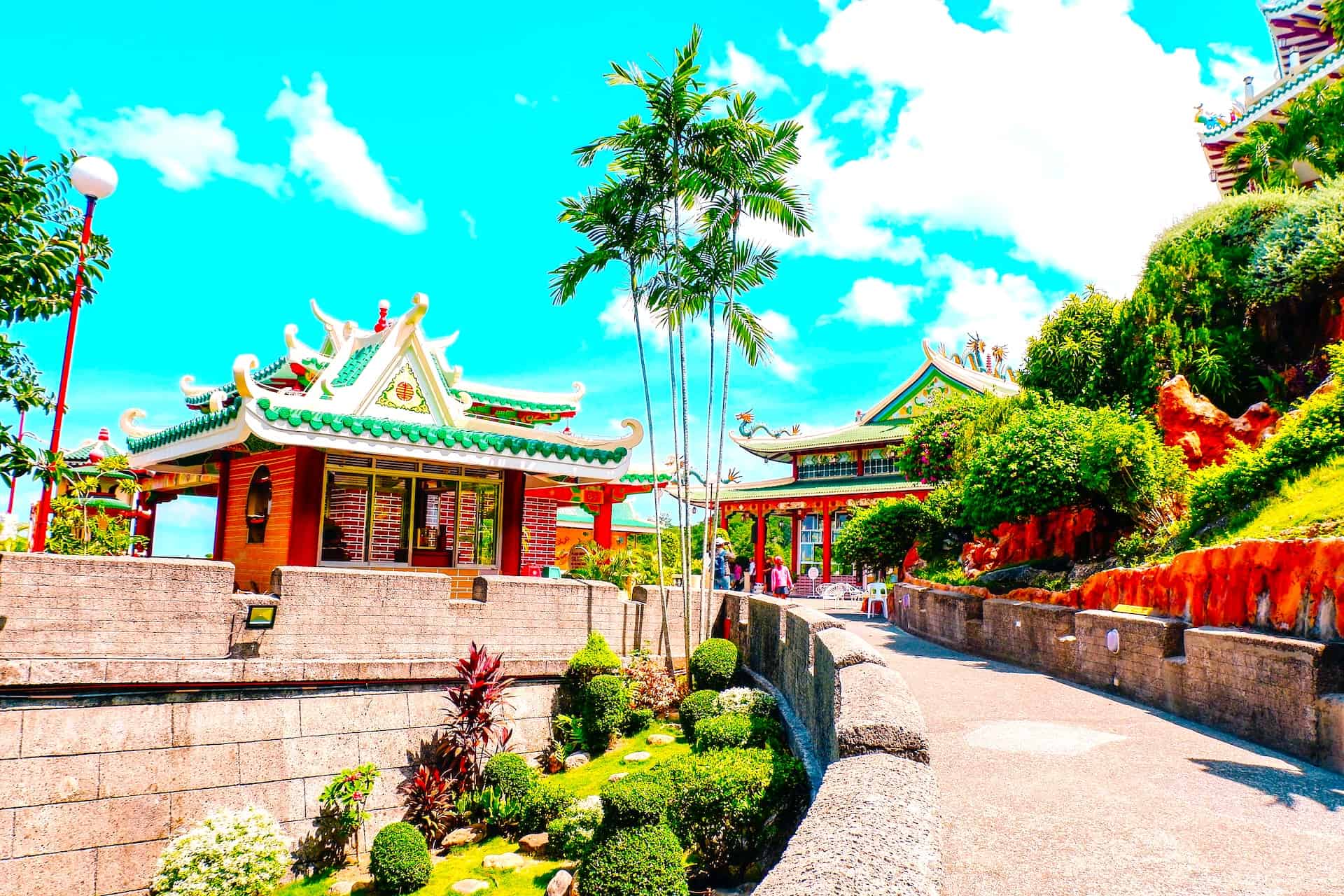
Section 10: Off the Beaten Path: Cebu Tourist Destinations
Beyond the well-trodden tourist paths in Cebu lie hidden gems that offer unique and enriching experiences. This section delves into some of the lesser-known yet captivating destinations in Cebu, where tourists can explore the unspoiled beauty and charm of the island.
Exploring the Uncharted: Cebu's Hidden Treasures
Cebu's lesser-known destinations are a trove of natural beauty and cultural richness, waiting to be explored. These places offer a glimpse into the untouched and serene side of the island, away from the hustle and bustle of popular tourist spots.
One such destination is the Camotes Islands, a group of islands known for their unspoiled beauty and rustic charm. These islands boast stunning beaches, clear waters, and a peaceful ambiance, perfect for those seeking a quiet retreat. The charm of the Camotes lies in its simplicity and the warm hospitality of its residents, making it a refreshing alternative to more crowded destinations.
Beverly Hills Subdivision: A Cultural Escape
Beverly Hills Subdivision, located in Cebu City, is home to the Taoist Temple, a significant site for both cultural and religious exploration. This temple, with its intricate designs and tranquil gardens, offers a peaceful escape within the city. The area around Beverly Hills Subdivision also provides a glimpse into the diverse cultural fabric of Cebu, where various influences meld to create a unique community.
The Rustic Allure of Cebu's Countryside
Cebu's countryside is dotted with quaint towns and villages that showcase the island's rural charm. These areas offer a different kind of tourist experience, one that is grounded in simplicity and natural beauty. The rural landscapes, with their rolling hills, farmlands, and traditional houses, provide a serene backdrop for a leisurely exploration of the island's less commercialized side.
In these rural areas, tourists can engage in community-based tourism activities, such as farm tours, local craft workshops, and cultural immersion experiences. These activities not only offer a unique perspective on Cebu's way of life but also support local communities and sustainable tourism practices.
Hidden Waterfalls and Natural Wonders
Cebu is home to numerous waterfalls that are off the beaten path, each offering a unique and tranquil experience. These hidden waterfalls, nestled in the heart of Cebu's lush forests, are perfect for those looking to connect with nature in a more intimate setting.
Cascading waters, natural swimming pools, and the surrounding greenery make these waterfalls ideal for relaxation and adventure. The journey to these hidden gems often involves trekking through scenic trails, adding an element of adventure to the experience.
The less explored tourist destinations in Cebu offer a unique and authentic experience of the island's natural beauty and cultural diversity. These hidden gems provide an opportunity for tourists to discover the quieter, more serene side of Cebu, away from the well-known tourist circuits. Exploring these off-the-beaten-path destinations not only enriches the travel experience but also contributes to the preservation and appreciation of Cebu's diverse landscapes and cultural heritage.
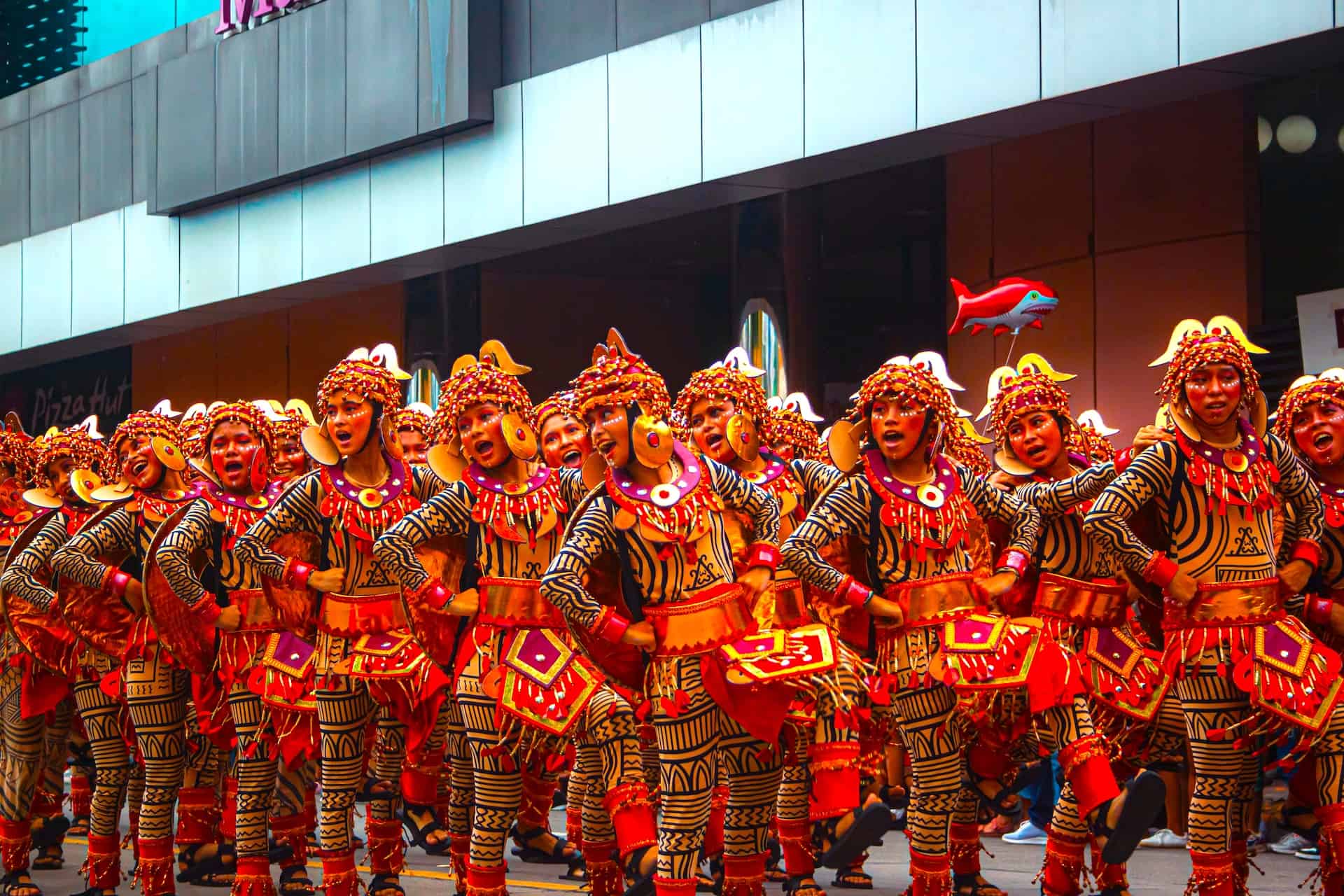
Section 11: Southern Wonders: Cebu South and Its Hidden Gems
The southern part of Cebu Island, often less traversed by the typical tourist, is a region replete with hidden gems and unexplored terrains. This section uncovers the southern wonders of Cebu, highlighting its unique landscapes, cultural experiences, and the untold stories waiting to be discovered.
Discovering the Unexplored South Cebu
South Cebu is a testament to the island's diverse geography, offering a range of experiences from pristine beaches to rugged mountains. This region provides a more secluded and authentic experience of what Cebu has to offer, away from the more crowded tourist areas.
One of the standout features of South Cebu is its coastline, boasting some of the most beautiful and untouched beaches on the island. These beaches are perfect for those seeking tranquility and a connection with nature. The clear waters and rich marine life also make South Cebu an ideal spot for snorkeling and diving enthusiasts.
The Rich Heritage of South Cebu
The heritage of South Cebu is deeply embedded in its towns and villages, where traditions and customs are preserved and celebrated. The region's cultural heritage is reflected in its festivals, architecture, and daily practices, offering an insightful glimpse into the Cebuano way of life.
Historical landmark Cebu Tourist Spots, such as the centuries-old churches and ancestral houses in towns like Argao and Dalaguete, are testaments to the region's rich history. These structures are not only architecturally significant but also hold stories of the past, making them important cultural tourist spots.
Adventure and Nature in South Cebu
For adventure seekers, South Cebu does not disappoint. The region's varied landscape offers numerous opportunities for outdoor activities. Canyoneering in the famous Kawasan Falls, trekking to the peak of Osmeña Peak, and exploring hidden caves are just a few of the adventures that await in South Cebu.
The natural beauty of South Cebu is also evident in its environmental attractions. The area is home to several natural parks and reserves, where one can witness the island's biodiversity and engage in eco-friendly activities like bird watching and nature photography.
Sustainable Tourism Initiatives in South Cebu
The rise in tourism in South Cebu has brought about an increased focus on sustainable tourism initiatives. Efforts are being made to ensure that the region's natural and cultural assets are preserved for future generations. This includes community-based tourism projects, which involve local communities in tourism development and promote responsible travel practices.
These initiatives not only aim to protect the environment and heritage of South Cebu but also to provide a more meaningful and sustainable experience for tourists. By engaging in these initiatives, visitors can contribute positively to the region's preservation and development.
South Cebu, with its untouched beauty, rich cultural heritage, and diverse adventure opportunities, offers a unique and authentic experience of Cebu. It's a region that beckons those who seek to explore beyond the conventional, to immerse themselves in the natural and cultural richness of Cebu. The southern wonders of Cebu are a reminder of the island's untapped potential and the endless possibilities that await discovery.
Section 12: Marine Exploration: Cebu's Underwater Realm
The waters surrounding Cebu Island are as rich and varied as the island itself, offering a world of marine exploration for enthusiasts and professionals alike. This section dives into the underwater realm of Cebu, highlighting the vibrant marine life, diving spots, and conservation efforts that make it a premier destination for marine exploration.
The Underwater Spectacle of Cebu
Cebu's surrounding seas are a diver's paradise, known for their vibrant coral reefs, diverse marine life, and clear waters. The underwater landscapes offer an array of experiences, from shallow coral gardens ideal for snorkeling to deeper dive sites teeming with exotic marine species.
Mactan Island, Moalboal, and Malapascua are among the well-known diving destinations in Cebu. These areas boast some of the best diving spots in the Philippines, each unique in its offerings. Mactan Island, easily accessible from Cebu City, is perfect for beginners and offers a variety of dive sites with abundant marine life. Moalboal is famous for its sardine runs, where divers can witness millions of sardines forming mesmerizing patterns underwater.
Malapascua Island: A Diving Haven
Malapascua Island, off the northern tip of Cebu, is a world-renowned diving destination. It is one of the few places in the world where divers can reliably encounter thresher sharks, making it a unique and thrilling spot for shark enthusiasts. The clear waters, diverse coral species, and the chance to see rare marine life make Malapascua a must-visit destination for divers.
Preserving Cebu's Marine Life
The beauty of Cebu's underwater world is matched by the efforts to preserve it. Marine conservation is a priority, with various initiatives and programs in place to protect the delicate marine ecosystems. Marine sanctuaries have been established to safeguard coral reefs and marine habitats, promoting sustainable tourism practices.
Dive operators and local communities work together in conservation efforts, including reef clean-ups, coral planting, and educational programs. These initiatives not only help preserve the marine environment but also raise awareness among tourists and locals about the importance of marine conservation.
Snorkeling and Family-Friendly Marine Activities
For those who prefer to stay closer to the surface, snorkeling in Cebu's clear waters offers a delightful experience. The shallow reefs are home to colorful corals and a variety of fish species, accessible even to non-divers. Family-friendly activities like glass-bottom boat tours and marine park visits also provide an opportunity to experience Cebu's marine life.
Sustainable Marine Tourism
As Cebu's marine attractions continue to draw tourists, sustainable practices are increasingly important. Responsible diving and snorkeling, adherence to environmental guidelines, and support for eco-friendly tourism activities are key to preserving Cebu's underwater heritage.
Cebu's underwater realm is a testament to the island's natural beauty and biodiversity. The vibrant marine life, world-class diving spots, and commitment to conservation make it a premier destination for marine exploration. Whether it's diving with thresher sharks in Malapascua or snorkeling in the shallow reefs of Mactan, Cebu offers unforgettable experiences that also foster respect and care for the marine environment.
Section 13: Cebu's Historical and Religious Landmarks
Cebu's history and culture are deeply intertwined with its religious heritage, evident in the numerous historical and religious landmark Cebu Tourist Spot scattered across the island. This section will explore some of these significant landmarks that offer insights into Cebu's past and its spiritual landscape.
The Significance of Magellan's Cross
Magellan's Cross is one of the most iconic historical landmark Cebu Tourist Spots in Cebu. Planted by Portuguese and Spanish explorers led by Ferdinand Magellan in 1521, this cross symbolizes the arrival of Christianity in the Philippines. Housed in a chapel in Cebu City, it draws not only tourists but also devout pilgrims. The cross is a testament to the island's role in the spread of Christianity in the region and remains a significant symbol in Philippine history.
The Basilica Minore del Santo Niño
Another integral landmark Cebu Tourist Spot in Cebu is the Basilica Minore del Santo Niño. Founded in the 16th century, it is the oldest Roman Catholic church in the Philippines. The church houses the revered Santo Niño statue, a depiction of the infant Jesus Christ, which is considered to be one of the country's oldest religious relics. The Basilica is not just a place of worship; it's a cultural and historical treasure, reflecting the deep-rooted Catholic faith and Spanish influence in the region.
Cebu Metropolitan Cathedral
The Cebu Metropolitan Cathedral, the seat of the Archdiocese of Cebu, is another significant religious site. This cathedral, with its imposing structure and rich history, has been a witness to various events that have shaped Cebu over the centuries. Its architecture, a mix of old and new, tells the story of the island's journey through time and is a must-visit for those interested in religious history and architecture.
The Taoist Temple in Beverly Hills Subdivision
Reflecting the diverse cultural makeup of Cebu, the Taoist Temple in Beverly Hills Subdivision is a symbol of the Chinese community's influence on the island. This temple, open to both worshippers and non-worshippers, stands as an example of the peaceful coexistence of different religions and cultures in Cebu. The temple also offers a panoramic view of Cebu City, making it a popular spot for both its cultural significance and its scenic beauty.
Preserving Cebu's Religious Heritage
The preservation of these religious and historical landmark Cebu Tourist Spots is crucial in maintaining Cebu's cultural identity. Efforts by the government and various cultural organizations are ongoing to ensure these sites are preserved for future generations. These landmarks are not only tourist attractions but also vital pieces of Cebu's history and cultural fabric.
Cebu's historical and religious landmark Cebu Tourist Spots are more than just tourist spots; they are gateways to understanding the island's rich history and diverse cultural heritage. These sites offer a unique blend of historical insight, spiritual significance, and architectural beauty, making them integral to the Cebu experience. Visiting these landmarks provides a deeper appreciation of Cebu's past and its cultural landscape.
Section 14: Nature's Bounty: Cebu's Natural Treasures
Cebu's natural landscape is a canvas of breathtaking beauty, encompassing a variety of ecosystems from pristine beaches and coral reefs to lush mountains and tranquil lakes. This section explores some of Cebu's most stunning natural treasures, showcasing why it's a haven for nature lovers and adventure seekers.
The Pristine Beaches of Cebu
Cebu's beaches are renowned for their stunning beauty, characterized by powdery white sands and clear turquoise waters. These beaches offer a slice of paradise for sunbathers, swimmers, and snorkelers alike. From the popular shores of Mactan Island to the secluded coves of Malapascua, each beach in Cebu presents its own unique allure.
The beaches not only provide relaxation and leisure opportunities but also host a range of water sports activities, including diving, jet skiing, and parasailing, making them ideal for adventure enthusiasts.
The Majestic Mountains of Cebu
Cebu's landscape is not just about beautiful beaches; it also boasts majestic mountains that offer breathtaking views and exhilarating adventures. The highlands of Cebu, particularly the Mantalongon Mountain Range, are a haven for hikers and nature enthusiasts.
Trekking to the summit of Osmeña Peak, the highest point in Cebu, rewards adventurers with panoramic views of the island and the surrounding sea. These mountainous areas are also home to diverse flora and fauna, providing a rich experience for those interested in nature and wildlife.
The Lush Forests and Exotic Wildlife
Cebu's forests are rich in biodiversity, housing a variety of plant and animal species. Nature reserves and protected areas in Cebu offer opportunities for eco-tourism, where visitors can immerse themselves in the natural environment and learn about the island's ecosystem.
Bird watching, nature walks, and wildlife spotting are some of the activities that can be enjoyed in these lush green spaces. These experiences not only bring visitors closer to nature but also emphasize the importance of conservation and environmental stewardship.
Cebu's Waterfalls and Natural Pools
The island is dotted with numerous waterfalls, each offering a unique and refreshing experience. These natural cascades, with their cool waters and scenic surroundings, provide a tranquil escape from the tropical heat.
Swimming in the natural pools formed at the base of these waterfalls is a popular activity among both locals and tourists. The journey to these waterfalls often involves trekking through scenic landscapes, adding an element of adventure to the experience.
Sustainable Efforts to Preserve Natural Beauty
As tourism continues to grow, sustainable practices are crucial in preserving Cebu's natural beauty. Efforts are being made to promote responsible tourism that respects the environment and supports local communities.
Initiatives such as community-based eco-tourism, conservation programs, and environmental awareness campaigns are vital in ensuring the sustainable development of Cebu's natural attractions. These efforts contribute to the preservation of the island's ecological balance and its natural heritage.
Cebu's natural treasures, from its idyllic beaches and majestic mountains to its lush forests and enchanting waterfalls, offer a diverse and immersive experience for all who visit. These natural wonders not only provide a backdrop for relaxation and adventure but also serve as a reminder of the importance of preserving our natural environment. Exploring these treasures offers a deeper appreciation for the beauty and diversity of Cebu's landscape.
Section 15: The Thrills of Cebu: Adventure Parks
Cebu is not only about serene beaches and historical landmark Cebu Tourist Spots; it also offers thrilling experiences for those seeking adventure and excitement. The island's adventure parks are destinations that promise fun-filled activities for all ages. This section will explore some of the top adventure parks in Cebu and the variety of activities they offer.
Anjo World Theme Park: Cebu's Own Wonderland
Anjo World Theme Park, located in Minglanilla, Cebu, is the island's largest theme park and a major attraction for families and thrill-seekers. This park features a variety of rides and attractions, including roller coasters, a Ferris wheel, and themed zones that cater to both children and adults.
The park's design and attractions are inspired by famous landmark Cebu Tourist Spots and themes from around the world, providing an immersive experience. From exhilarating rides that get your adrenaline pumping to more relaxed attractions for those who prefer a more laid-back experience, Anjo World offers something for every visitor.
Cebu Safari and Adventure Park: A Wildlife Adventure
The Cebu Safari and Adventure Park in Carmen is another must-visit destination for those who love wildlife and nature. This park is one of the largest zoos in the Philippines and is home to a wide range of animal species, including some that are rare and endangered.
Apart from viewing the animals, the park offers adventure activities such as zip-lining and ATV rides, making it a perfect combination of a wildlife sanctuary and an adventure park. The safari's commitment to animal welfare and conservation education makes it not only an entertaining destination but also an informative one.
Sky Experience Adventure: Urban Thrills
Located at the top of the Crown Regency Hotel in Cebu City, Sky Experience Adventure offers a unique urban adventure experience. The park features activities such as the Edge Coaster, which tilts riders over the edge of the building, and the Sky Walk Extreme, where visitors can walk around the edge of the building on a glass floor.
These activities provide a thrilling experience with a spectacular view of the city, making it a popular destination for those looking for an adrenaline rush combined with a scenic urban backdrop.
Danasan Eco Adventure Park: A Haven for Outdoor Enthusiasts
Danasan Eco Adventure Park, situated in the town of Danao, offers a range of outdoor activities set in a beautiful natural environment. The park's offerings include waterfall trekking, cave exploration, horseback riding, and various water sports.
This park is ideal for those who love nature and adventure, offering a chance to experience Cebu's natural beauty in an active and exciting way. The park's focus on eco-friendly practices also ensures that the adventures are enjoyed in a sustainable manner.
Cebu's adventure parks provide a diverse array of experiences, catering to everyone from families with children to adventure junkies. These parks are more than just tourist attractions; they offer a chance to create lasting memories, whether through thrilling rides, close encounters with wildlife, or exhilarating outdoor activities. The variety and quality of these adventure parks further solidify Cebu's reputation as a destination that offers a complete and dynamic travel experience.
Section 16: Planning Your Trip: The Cebu Itinerary
Cebu offers a plethora of experiences, and planning a trip to this diverse island can be as exciting as it is overwhelming. This section aims to provide a guide on how to create the perfect itinerary for a trip to Cebu, ensuring visitors make the most of their time on this beautiful island.
Day 1: Arrival and Exploring Cebu City
- Morning: Arrival at Cebu Mactan International Airport, settle into your accommodation.
- Afternoon: Explore the historic sites of Cebu City, including Magellan's Cross, the Basilica Minore del Santo Niño, and Fort San Pedro.
- Evening: Enjoy a dinner at one of the local restaurants, sampling Cebuano cuisine.
Day 2: The Cultural and Natural Highlights
- Morning: Visit the Taoist Temple and the Sirao Flower Garden.
- Afternoon: Head to Tops Lookout for panoramic views of the city.
- Evening: Explore the vibrant nightlife and dining scene in Cebu City.
Day 3: Island Hopping and Marine Adventures
- Full Day: Embark on an island-hopping tour from Mactan Island, including snorkeling and beach activities.
- Evening: Return to Cebu City and relax after a day of sun and sea.
Day 4: Southern Cebu's Natural Wonders
- Morning to Afternoon: Take a day trip to the south of Cebu. Visit the Kawasan Falls and experience canyoneering.
- Evening: Return to Cebu City.
Day 5: Leisure and Departure
- Morning: Leisure time for last-minute shopping or relaxation.
- Afternoon: Departure from Cebu Mactan International Airport.
Tailoring Your Itinerary
This sample itinerary can be adjusted based on interests, pace, and the duration of the trip. Cebu is an island that caters to various interests – from history and culture to adventure and relaxation. Visitors can choose to focus more on beach activities, diving, cultural exploration, or adventure sports, depending on their preferences.
Tips for a Smooth Cebu Experience
- Transportation: Plan your transportation in advance, especially when traveling to different parts of the island. Renting a car or using local transportation can be considered.
- Accommodation: Cebu offers a range of accommodations, from luxury resorts to budget hostels. Booking in advance is advisable, especially during peak seasons.
- Local Customs and Etiquette: Respect local customs and traditions. Cebuanos are known for their hospitality, and a friendly approach is always appreciated.
- Safety and Health: Stay informed about safety guidelines, especially when engaging in outdoor and water activities. Ensure to have travel insurance and be aware of health facilities in the area.
A trip to Cebu is an opportunity to experience a blend of historical richness, cultural diversity, natural beauty, and adventure. A well-planned itinerary ensures that visitors can enjoy the essence of Cebu, making their visit a memorable and fulfilling experience.
Section 17: Cebu's Rich Heritage and Natural Wonders
Cebu, an island that seamlessly blends its rich historical heritage with stunning natural wonders, offers a tapestry of experiences that are both diverse and enriching. This section delves into the various aspects of Cebu's heritage and its natural beauty, providing a comprehensive look at what makes this island a unique and captivating destination.
The Historical Richness of Cebu
Cebu's history is a complex narrative of native traditions, Spanish colonialism, and modern evolution. This rich history is evident in the various landmark Cebu Tourist Spots scattered throughout the island. From the iconic Magellan's Cross to the ancient walls of Fort San Pedro, each site tells a story of Cebu's past.
The city's museums, such as the Museo Sugbo and Casa Gorordo, offer detailed insights into Cebu's historical journey. These institutions preserve artifacts and narratives that highlight the island's cultural evolution, making them essential stops for anyone interested in understanding Cebu's heritage.
The Natural Splendors of Cebu
Cebu's natural landscape is as varied as its history. The island boasts a range of natural wonders, from the stunning Kawasan Falls to the majestic peaks of the Mantalongon Mountain Range. These natural attractions offer not only breathtaking views but also a host of activities for nature lovers and adventure seekers.
The beaches of Cebu, known for their crystal-clear waters and white sands, are perfect for relaxation, swimming, and various water sports. For those who seek more adventurous pursuits, the island's rugged terrain provides excellent opportunities for trekking, mountain biking, and canyoneering.
The Fusion of Culture and Nature
What makes Cebu truly unique is how its rich cultural heritage intertwines with its natural wonders. The island's festivals, such as the Sinulog Festival, are not only cultural spectacles but also celebrations of Cebu's natural bounty. These festivals showcase traditional dances, music, and art, all of which are deeply rooted in the island's history and natural environment.
The local cuisine of Cebu, influenced by its history and geography, is another aspect where culture and nature merge. Traditional dishes, often made with fresh, locally-sourced ingredients, offer a taste of Cebu's rich cultural tapestry and its natural resources.
Preserving Cebu's Heritage and Environment
As Cebu continues to attract visitors from around the world, the importance of preserving its cultural heritage and natural environment becomes increasingly crucial. Efforts are underway to ensure that Cebu's historical landmark Cebu Tourist Spots are maintained and that its natural wonders are protected from overdevelopment and environmental degradation.
Sustainable tourism initiatives are being promoted to balance the need for economic growth with the preservation of Cebu's rich heritage and natural beauty. These initiatives aim to create a sustainable future for Cebu, ensuring that its unique charms can be enjoyed by future generations.
Cebu is an island where history and nature coexist in harmony, offering a rich and diverse experience for visitors. Its historical landmark Cebu Tourist Spots, natural wonders, cultural festivals, and cuisine all contribute to the unique character of the island. Understanding and appreciating this fusion of culture and nature is key to experiencing the true essence of Cebu.
Section 18: The Great Outdoors: Cebu's Adventure and Leisure Activities
Cebu's natural landscape offers a playground for a wide range of outdoor activities, appealing to adventure seekers and leisure travelers alike. This section explores the various outdoor activities available in Cebu, emphasizing the island's diverse options for enjoying the great outdoors.
Embracing Adventure in Cebu's Landscape
Cebu's varied terrain, from its rugged mountains to its crystal-clear waters, provides the perfect setting for a multitude of adventure activities. For those who crave an adrenaline rush, Cebu offers experiences such as zip-lining, parasailing, and mountain biking.
One of the most sought-after adventure activities in Cebu is canyoneering, particularly in the area around the stunning Kawasan Falls. This exhilarating activity involves trekking, climbing, swimming, and jumping through river canyons and is a must-try for thrill-seekers.
Diving and Snorkeling: Exploring the Underwater World
Cebu's marine life is rich and diverse, making it an ideal destination for diving and snorkeling. The coral reefs around the island, teeming with colorful fish and other marine creatures, provide an underwater spectacle for divers and snorkelers of all levels.
Locations such as Moalboal are renowned for their sardine runs, while Malapascua Island offers the unique opportunity to dive with thresher sharks. These diving experiences allow visitors to witness the incredible marine biodiversity that Cebu is known for.
Hiking and Trekking: Cebu's Mountain Trails
For those who prefer land-based adventures, Cebu's mountains offer excellent opportunities for hiking and trekking. Trails range from easy walks to more challenging treks, such as the climb to Osmeña Peak, which rewards hikers with panoramic views of the island.
These trekking experiences not only provide physical challenges but also offer a chance to connect with nature, with trails passing through lush forests, past rivers, and along ridges with stunning vistas.
Leisure Activities: Golf, Spa, and Beach Relaxation
Cebu is also home to world-class golf courses, luxurious spas, and serene beach resorts, catering to those seeking a more leisurely experience. Golf enthusiasts can enjoy a round in beautifully landscaped courses, while those looking to unwind can indulge in spa treatments that combine relaxation with traditional Filipino healing practices.
The island's beaches, with their soft sands and calm waters, are perfect for days of relaxation, sunbathing, and gentle swimming, making them ideal for families and travelers looking to unwind.
Eco-Tourism: Sustainable Outdoor Activities
Cebu's commitment to eco-tourism is evident in the sustainable practices integrated into its outdoor activities. Eco-tours, nature walks, and bird-watching excursions are designed to minimize environmental impact while allowing visitors to appreciate Cebu's natural beauty and wildlife.
These eco-friendly activities not only provide unique experiences but also raise awareness about the importance of preserving Cebu's natural environment for future generations.
Cebu's array of outdoor activities offers something for everyone, from adrenaline-pumping adventures to serene leisure experiences. Whether it's diving into the depths of the sea, trekking through mountainous terrain, or simply relaxing on a tranquil beach, Cebu's great outdoors provides a perfect backdrop for an unforgettable vacation. The island's commitment to sustainable and eco-friendly practices further enhances these outdoor experiences, ensuring that its natural wonders are preserved and appreciated.
Section 19: Cebu's Urban and Rural Contrasts
Cebu is an island that beautifully juxtaposes its bustling urban centers with serene rural landscapes. This section explores the unique dynamics between the urban developments and rural charms of Cebu, offering insights into the diverse experiences the island provides.
The Vibrancy of Cebu's City Life
Cebu City, the heart of the island, is a bustling metropolis filled with modern amenities, shopping centers, business districts, and vibrant nightlife. This urban center is a hub of activity, where historical sites coexist with contemporary structures, reflecting the island's growth and modernization.
The city life in Cebu offers an array of experiences, from fine dining and shopping to cultural events and entertainment. The IT Park and Business Park are examples of Cebu's thriving economy, showcasing the island's progress in technology and commerce.
The Tranquility of Cebu's Rural Areas
In contrast to the urban hustle and bustle, the rural areas of Cebu present a different world altogether. These regions are characterized by their lush landscapes, traditional villages, and a slower pace of life. The rural parts of Cebu are where one can experience the island's natural beauty and cultural heritage in a more intimate and undisturbed setting.
Agriculture plays a significant role in these areas, with farms and plantations dotting the landscape. Visiting these rural locales offers a glimpse into the traditional Cebuano way of life, where community and simplicity are valued.
The Interplay of Urban and Rural Elements
The interplay between Cebu's urban and rural areas contributes to the island's unique charm. While the city offers modern conveniences and a fast-paced lifestyle, the rural areas provide a retreat into nature and tradition. This contrast allows visitors to experience the best of both worlds – the excitement of the city and the tranquility of the countryside.
Many tourists choose to stay in the city for its accessibility and amenities but venture into the rural areas for day trips and excursions. This flexibility makes Cebu an appealing destination for a wide range of travelers, catering to diverse preferences and interests.
Sustainable Development and Cultural Preservation
As Cebu continues to develop, balancing urban growth with rural preservation and sustainability is essential. Efforts are being made to ensure that development in the urban areas does not encroach upon the rural landscapes and traditional communities.
Cultural preservation is also a key focus, with initiatives to maintain the heritage and traditions of rural Cebu. These efforts are crucial in keeping the island's cultural identity intact amidst the changes brought by urbanization.
Cebu's blend of urban dynamism and rural serenity creates a multifaceted destination that offers something for everyone. Whether it's the energy of city life or the peacefulness of the countryside, Cebu provides a rich tapestry of experiences. The island's ability to maintain this balance makes it a unique and captivating destination, reflecting the diverse character and spirit of Cebu.
Section 20: The Beaches of Cebu: A Sunseeker's Paradise
Cebu's beaches are among its most celebrated attractions, drawing sunseekers and beach enthusiasts from around the world. This section highlights the stunning beaches across Cebu, emphasizing their beauty, diversity, and the various activities they offer.
The Allure of Cebu's White Sand Beaches
Cebu's coastline is dotted with an array of beautiful beaches, known for their powdery white sands and crystal-clear waters. From the popular shores of Mactan Island to the more secluded beaches on smaller islands like Malapascua and Bantayan, each beach offers its unique charm and ambiance.
These beaches are perfect for a variety of activities – whether it’s swimming, sunbathing, or simply enjoying the scenic beauty. For those seeking more active pursuits, many of Cebu’s beaches offer water sports such as snorkeling, diving, and jet skiing.
The Serenity of Cebu’s Secluded Beaches
Apart from the well-known beaches, Cebu is also home to several hidden gems – secluded beaches that offer tranquility and privacy. These lesser-known spots are ideal for those looking to escape the crowds and experience a more serene beach setting.
The journey to these secluded beaches often involves traveling off the beaten path, but the reward is a more intimate experience with nature. These locations provide a peaceful retreat where one can relax and rejuvenate amidst stunning natural surroundings.
Sustainable Beach Tourism
As the popularity of Cebu’s beaches continues to grow, sustainable tourism practices are increasingly important. Efforts are being made to preserve the natural beauty of these beaches and to ensure that tourism development is environmentally responsible.
Initiatives such as beach clean-ups, coral reef protection, and responsible waste management are integral to maintaining the pristine condition of Cebu’s beaches. These efforts not only protect the environment but also enhance the experience for visitors.
The Beaches as Centers of Community Life
The beaches in Cebu are not just tourist destinations; they are also central to the local communities’ way of life. Many communities rely on the beaches for their livelihoods, through fishing, tourism, and other related industries.
Engaging with these local communities offers a deeper understanding of the cultural significance of the beaches and the importance of preserving them. It also provides an opportunity for meaningful cultural exchange and supports the local economy.
The beaches of Cebu are a testament to the island's natural beauty and are a major draw for visitors from around the globe. Offering a mix of lively beachfronts and serene escapes, they cater to a wide range of preferences. The commitment to sustainable practices ensures that these beaches remain unspoiled for future generations to enjoy. Whether for relaxation, adventure, or cultural immersion, Cebu's beaches offer an unparalleled seaside experience.
Section 21: Cebu's Culinary Journey
Cebu's culinary landscape is as rich and varied as its culture and natural beauty. This section explores the diverse array of food experiences in Cebu, from traditional dishes to contemporary cuisine, highlighting the island's status as a gastronomic haven.
The Richness of Traditional Cebuano Cuisine
Cebu's traditional cuisine is a reflection of its cultural heritage, with influences from Malay, Spanish, and Chinese cooking. The island is famous for its lechon (roasted pig), considered by many as the best in the Philippines. This delicacy, characterized by its crispy skin and flavorful meat, is a staple in local celebrations and a must-try for visitors.
Other traditional dishes include sutukil (a combination of sugba-grill, tuwa-soup, and kilaw-raw seafood), which showcases the island's fresh seafood, and the savory and hearty humba (braised pork belly). These dishes are not just meals; they are an integral part of Cebu's history and culture.
Street Food and Local Delicacies
Cebu's street food scene offers a more casual but equally tantalizing culinary experience. From skewered meats and grilled seafood to sweet treats like bibingka (rice cake) and puto maya (sticky rice), the streets of Cebu are a haven for food lovers.
Sampling street food is an excellent way to experience the local flavors and to engage with the everyday life of Cebuanos. Each street food stall and market offers a unique taste of the island's rich culinary tapestry.
Contemporary and Fusion Cuisine
Cebu's culinary scene also includes a variety of contemporary and fusion cuisines, reflecting the island's evolving tastes and global influences. Numerous restaurants in Cebu City and around the island offer innovative dishes that blend local flavors with international cooking techniques.
These establishments range from upscale dining to casual eateries, catering to a diverse palate and providing a modern twist on traditional Cebuano flavors.
The Role of Local Ingredients and Sustainability
Cebu's cuisine is deeply connected to its natural resources, with an emphasis on fresh, locally-sourced ingredients. This connection underscores the importance of sustainable practices in food production and consumption.
Many chefs and restaurateurs in Cebu are advocates for using organic and locally-sourced ingredients, supporting local farmers and fishermen, and promoting sustainable culinary practices. This approach not only enhances the flavors but also contributes to the island's overall sustainability efforts.
Cebu's culinary journey is a vibrant and essential aspect of its cultural identity. The island's traditional dishes, street food, and contemporary cuisine offer a glimpse into its rich history and evolving culture. For food enthusiasts, Cebu provides a diverse and memorable gastronomic experience, firmly establishing the island as a top culinary destination.
Section 22: The Festive Spirit of Cebu
Cebu's cultural calendar is marked by vibrant festivals that showcase the island's rich heritage, lively traditions, and community spirit. This section will delve into some of Cebu's most celebrated festivals, illustrating how they contribute to the island's unique charm and allure.
Sinulog Festival: A Celebration of Faith and Culture
The Sinulog Festival, held annually in January, is perhaps the most famous of Cebu's festivals. Celebrating the Santo Niño (Child Jesus), Sinulog is a colorful display of dances, music, and religious processions. The festival's highlight is a grand street parade featuring elaborately decorated floats, rhythmic drum beats, and dancers in vibrant costumes performing the traditional Sinulog dance.
Sinulog is not just a tourist attraction but a deeply religious event for many Cebuanos. It embodies the fusion of Cebu's pre-colonial history, Christian faith, and modern-day revelry, making it a compelling experience for both locals and visitors.
Paskuhan: Christmas Celebrations in Cebu
Christmas in Cebu, known as Paskuhan, is celebrated with much enthusiasm and joy. The holiday season sees the island adorned with festive lights and decorations, with a series of events and activities that highlight the warmth and generosity of the Cebuano people.
Christmas fairs, night markets, and carol singing are common during Paskuhan, offering a festive atmosphere that brings together communities and families. The season is also a time for special church services and religious observances, reflecting the strong faith that is an integral part of Cebuano culture.
Kadaugan sa Mactan: Commemorating a Historic Battle
Kadaugan sa Mactan, celebrated in April, commemorates the Battle of Mactan between the native chieftain Lapu-Lapu and Portuguese explorer Ferdinand Magellan. This historical event is reenacted on the shores of Mactan Island, accompanied by cultural performances, local food festivals, and various competitions.
The festival not only celebrates Cebu's history but also honors the bravery and heroism of Lapu-Lapu and his warriors. It's a time for Cebuanos to reflect on their heritage and to celebrate the island's indomitable spirit.
Other Cultural Festivals
Cebu is home to numerous other festivals throughout the year, each celebrating different aspects of the island's culture and traditions. These include the Mantawi Festival, showcasing Mandaue City's history and crafts, and the Kabkaban Festival in Carcar, celebrating the town's rich cultural heritage.
Each festival in Cebu is a vibrant expression of the island's history, beliefs, and community life, offering a window into the soul of Cebuano culture.
Cebu's festivals are a testament to the island's rich cultural tapestry. They offer a vibrant mix of history, faith, and community spirit, bringing to life the traditions and stories of the Cebuano people. For visitors, experiencing these festivals is a way to immerse in the local culture and to witness the lively, colorful, and spirited side of Cebu.
Section 23: Cebu's Historical and Religious Landmarks
Cebu's landscape is enriched with historical and religious landmark Cebu Tourist Spots that narrate the island's rich past and cultural diversity. This section delves into the significant historical and religious sites of Cebu, underscoring their importance in the island's cultural tapestry.
Magellan's Cross: A Symbol of History and Faith
Magellan's Cross is one of Cebu's most renowned historical landmark Cebu Tourist Spots. Planted by Portuguese explorer Ferdinand Magellan in 1521, this cross marks the introduction of Christianity in the Philippines. The site, housed in a chapel in Cebu City, is a pilgrimage spot for many, reflecting the deep-rooted Catholic faith in the region.
The Basilica Minore del Santo Niño: A Religious Treasure
The Basilica Minore del Santo Niño, dating back to 1565, is the oldest Roman Catholic church in the Philippines. The church houses the revered statue of the Santo Niño, a representation of the infant Jesus Christ, which is a significant religious relic. The Basilica is not only a place of worship but also a monument of historical and cultural importance.
Fort San Pedro: A Glimpse into Cebu's Colonial Past
Fort San Pedro, the oldest military defense structure in the Philippines, offers a window into Cebu's colonial history. Built by the Spaniards in the 17th century, the fort has served various roles over the centuries and now functions as a museum. It's a must-visit for history enthusiasts and those interested in Cebu's colonial era.
The Taoist Temple: Cultural Harmony in Cebu
The Taoist Temple, located in Beverly Hills Subdivision of Cebu City, showcases the influence of Chinese culture on the island. This temple, open to worshippers and non-worshippers alike, is not just a religious site but also a place that celebrates cultural diversity and harmony in Cebu.
Preserving Cebu's Historical and Religious Heritage
The preservation of these historical and religious landmark Cebu Tourist Spots is crucial for maintaining Cebu's cultural identity. Efforts by various cultural organizations and the government ensure that these sites are preserved and respected. They serve as educational resources for the younger generation and as reminders of the island's rich history and diverse culture.
Cebu's historical and religious landmark Cebu Tourist Spots are key to understanding the island's rich cultural and historical narrative. They provide insights into the past and present of Cebu, reflecting the island's journey through time. Visiting these sites offers a deeper appreciation of Cebu's heritage, making them integral to the complete Cebu experience.
Section 24: Cebu's Thriving Arts and Culture Scene
Cebu's arts and culture scene is a vibrant tapestry that reflects its rich history, diverse influences, and contemporary creativity. This section explores the various facets of Cebu's cultural landscape, from its traditional arts to modern expressions.
Traditional Arts: Weaving Cebu's Cultural Fabric
The traditional arts in Cebu are a reflection of its rich heritage. Handicrafts such as basketry, weaving, and woodcarving are deeply embedded in Cebuano culture. Artisans in villages across the island continue to practice these crafts, preserving the techniques passed down through generations.
These traditional crafts are not only a means of livelihood for many Cebuanos but also a way to keep the island's cultural heritage alive. The intricate designs and skilled craftsmanship of these items reflect the artistic legacy of Cebu.
Contemporary Art: A Modern Twist on Tradition
Cebu's contemporary art scene is dynamic and evolving. Local artists are gaining recognition both nationally and internationally for their unique perspectives and innovative approaches. Art galleries and spaces in Cebu City showcase a mix of traditional and modern art, offering a platform for emerging and established artists.
These contemporary art forms often draw from Cebu's rich cultural and historical background, providing a modern interpretation of traditional themes. This blend of old and new adds depth and diversity to Cebu's cultural landscape.
Music and Dance: The Rhythmic Heartbeat of Cebu
Music and dance are integral parts of Cebu's cultural identity. Traditional Cebuano music, with its blend of indigenous, Spanish, and American influences, is a testament to the island's diverse cultural history. Folk dances such as the Sinulog and Kuradang are performed during festivals and cultural events, showcasing the island's vibrant traditions.
The contemporary music scene in Cebu is equally lively, with local bands and musicians exploring various genres and styles. Live music venues and festivals in Cebu City offer a space for these artists to showcase their talents and for audiences to experience the modern musical landscape of Cebu.
Theater and Performing Arts: Staging Cebu's Stories
The theater and performing arts in Cebu are avenues for storytelling and cultural expression. Local theater groups perform plays and productions that range from traditional folk tales to contemporary issues, reflecting the societal narratives of Cebu.
These performances not only provide entertainment but also serve as a medium for education and cultural enrichment. They offer insights into Cebu's society and history, allowing audiences to engage with the island's cultural dialogues.
Festivals: Celebrating Cebu's Cultural Diversity
Cebu's festivals are a colorful celebration of its arts and culture. These events, often tied to historical and religious themes, are marked by parades, dances, music, and art exhibitions. They are a testament to the island's communal spirit and its commitment to preserving and celebrating its cultural heritage.
The arts and culture scene in Cebu is a vibrant reflection of the island's history and contemporary creativity. From traditional crafts to modern art forms, from folk music to contemporary theater, Cebu's cultural landscape is diverse and dynamic. Engaging with these cultural expressions offers a deeper understanding of Cebu's identity and its rich artistic heritage.
Section 25: Cebu's Urban Development and Economic Growth
Cebu, known for its rich history and natural beauty, is also a center of urban development and economic growth in the Philippines. This section explores the economic landscape of Cebu, focusing on its urban development, business opportunities, and the balance between growth and sustainability.
The Economic Hub of the Visayas
Cebu City, often referred to as the “Queen City of the South,” is not only a cultural and historical center but also an economic powerhouse in the Visayas region. The city's strategic location has made it a hub for commerce, trade, and industry. Over the years, Cebu has seen significant growth in various sectors, including real estate, tourism, manufacturing, and information technology.
The Rise of Business Parks and IT Centers
One of the key drivers of Cebu's economic growth is the development of business parks and IT centers. These areas have attracted both local and international companies, turning Cebu into a bustling center for business process outsourcing (BPO) and other IT-related services. The presence of these industries has created numerous job opportunities and has been instrumental in the city's urban and economic development.
Balancing Urban Growth with Cultural Preservation
As Cebu continues to develop, there is an ongoing challenge to balance urban expansion with the preservation of its cultural heritage. Efforts are being made to ensure that development projects are carried out responsibly and sustainably, with consideration for the island's historical sites and natural environment.
This balance is crucial in maintaining Cebu's identity amid rapid urbanization. It involves careful planning and collaboration between the government, private sector, and local communities to ensure that economic growth does not come at the cost of cultural and environmental degradation.
Infrastructure Development and Connectivity
Improvements in infrastructure have been key to supporting Cebu's economic growth. Developments in transportation, such as the expansion of the Cebu Mactan International Airport and the upgrading of seaports and road networks, have enhanced connectivity and accessibility, further boosting trade and tourism.
These infrastructure projects not only facilitate business and commerce but also improve the quality of life for residents and enhance the experience for visitors to the island.
Cebu's urban development and economic growth are testaments to the island's dynamic and forward-looking character. While it continues to evolve as a modern economic hub, there is a conscious effort to preserve its rich cultural heritage and natural beauty. This delicate balance is what makes Cebu a unique and attractive destination for both business and leisure.
Section 26: The Beaches of Cebu: A Coastal Paradise
Cebu's coastline is a tapestry of stunning beaches, each offering a unique blend of natural beauty, recreational activities, and serene ambiances. This section will explore the diverse range of beaches across Cebu, highlighting their appeal to different types of travelers.
The Diversity of Cebu's Beaches
From the bustling beachfronts of Mactan Island to the secluded sands of Bantayan and Malapascua, Cebu's beaches are as varied as they are numerous. These beaches are renowned for their crystal-clear waters, powdery white sands, and the lush tropical scenery that frames them.
Mactan Island: A Hub for Water Sports and Luxury Resorts
Mactan Island, connected to Cebu City by two bridges, is known for its luxury resorts and vibrant water sports scene. Here, visitors can indulge in a range of activities such as scuba diving, snorkeling, jet skiing, and parasailing. The island's proximity to the city makes it a popular choice for both tourists and locals looking for a quick beach getaway.
Bantayan Island: Untouched Beauty and Tranquility
Bantayan Island, located at the northern tip of Cebu, offers a more laid-back beach experience. Known for its pristine beaches and quaint fishing villages, the island is perfect for those seeking tranquility and a taste of the island's traditional lifestyle.
Malapascua Island: A Diver's Haven
Malapascua Island, a small island off the northern coast of Cebu, is a favorite destination for divers. It is one of the few places in the world where divers can regularly encounter thresher sharks. The island's unspoiled coral reefs and rich marine life also make it an excellent spot for snorkeling and underwater photography.
The Southern Beaches: Secluded Gems
The southern part of Cebu is home to several hidden beach gems that are less frequented by tourists. These beaches, such as those in Moalboal and Oslob, offer serene environments, stunning sunsets, and opportunities for close encounters with marine life, including whale sharks.
Sustainable Beach Tourism
As the popularity of Cebu's beaches continues to grow, efforts towards sustainable tourism are crucial. Initiatives to protect marine ecosystems, manage waste, and promote eco-friendly practices are essential to preserving the natural beauty of these beaches.
The beaches of Cebu are a cornerstone of the island's appeal, offering diverse experiences to suit every preference. Whether it's adventure and luxury or tranquility and natural beauty, Cebu's beaches provide the perfect backdrop for a memorable tropical experience. Their preservation and sustainable management remain key to ensuring these coastal treasures continue to enchant visitors for generations to come.
Section 27: The Rich Tapestry of Cebu's Culture and Traditions
Cebu, with its deep historical roots and diverse cultural influences, offers a rich tapestry of traditions and cultural practices. This section delves into the cultural heritage of Cebu, exploring the customs, arts, and societal norms that define the Cebuano way of life.
The Blend of Cultural Influences in Cebu
Cebu's culture is a unique blend of indigenous, Spanish, and Asian influences, reflecting its historical journey. The island's traditional customs and practices have been shaped by these varied influences, creating a rich cultural mosaic. From traditional dances and music to festivals and crafts, Cebu's culture is a vibrant expression of its history and identity.
Traditional Crafts and Industries
Cebu is renowned for its handicrafts, which include basket weaving, furniture making, and the production of world-class guitars. These crafts are not just economic activities but also an integral part of Cebu's cultural heritage. The skills and techniques used in these crafts have been passed down through generations, preserving traditional methods while adapting to modern demands.
The Cebuano Language and Literature
The Cebuano language, widely spoken in Cebu, is an important aspect of the island's cultural identity. It is a language rich in expressions, proverbs, and poetry, reflecting the Cebuano people's way of life and beliefs. Cebuano literature, including folklore, songs, and contemporary works, offers a window into the soul of Cebu's culture.
Festivals: Celebrations of History and Faith
Cebu's festivals are a colorful celebration of its history, faith, and community spirit. The Sinulog Festival, in particular, is a grand display of Cebu's cultural richness, combining religious devotion with cultural performances. Other festivals across the island celebrate various aspects of Cebu's history and traditions, drawing both locals and tourists alike.
Preserving and Promoting Cebuano Culture
There is a growing emphasis on preserving and promoting Cebuano culture in the face of modernization and global influences. Efforts include cultural education in schools, support for local artists and craftsmen, and the preservation of historical sites. These efforts ensure that Cebu's cultural heritage is not only preserved but also celebrated and shared with future generations.
On Cebu Tourist Spots
Cebu's culture is a dynamic and integral part of its charm. It is a culture that is rooted in history yet continuously evolving. Understanding and experiencing this rich cultural tapestry is essential for anyone seeking to truly connect with the heart and soul of Cebu. From its traditional crafts to its vibrant festivals, Cebu's culture is a celebration of its diverse heritage and a testament to the resilience and creativity of its people.
Section 28: Cebu's Environmental Conservation Efforts
Cebu, an island blessed with rich natural resources and diverse ecosystems, faces the challenge of balancing development with environmental conservation. This section highlights the efforts being made in Cebu to protect its environment and ensure sustainable development.
Protecting Marine Biodiversity
Cebu's marine environment, with its coral reefs and diverse marine life, is of significant ecological importance. Efforts to protect these marine ecosystems include the establishment of marine sanctuaries and the implementation of sustainable fishing practices. These initiatives help to preserve the marine biodiversity, crucial for maintaining the ecological balance and supporting local livelihoods.
Reforestation and Protection of Forest Areas
Deforestation has been a concern in Cebu, affecting its natural landscapes and wildlife habitats. Reforestation projects and the protection of existing forest areas are key strategies in Cebu's environmental conservation efforts. These initiatives not only help restore natural habitats but also play a crucial role in water conservation and climate regulation.
Waste Management and Pollution Control
As urbanization in Cebu continues, managing waste and controlling pollution have become critical challenges. Programs aimed at improving waste management systems, reducing plastic use, and promoting recycling are being implemented across the island. These measures are essential for maintaining the cleanliness of both urban and rural areas and for protecting the island's natural beauty.
Promoting Eco-Tourism
Cebu's approach to tourism is increasingly focused on sustainability. Eco-tourism initiatives that emphasize minimal environmental impact and community involvement are being promoted. These initiatives provide visitors with environmentally responsible ways to enjoy Cebu's natural attractions while contributing to conservation efforts and local economies.
Community Involvement in Conservation
The involvement of local communities is crucial in Cebu's environmental conservation efforts. Educational programs and community-based projects encourage local residents to take an active role in protecting their environment. By empowering communities and fostering a sense of stewardship, these efforts help ensure the long-term success of conservation initiatives.
Conclusion
Environmental conservation in Cebu is a multifaceted effort, involving a range of strategies from protecting marine life and forests to managing waste and promoting eco-tourism. The participation of local communities, government, and private sectors is essential in these efforts. As Cebu continues to develop, maintaining a balance between progress and environmental sustainability remains a key priority, ensuring that the island's natural beauty and resources can be enjoyed by future generations.
Sources: https://en.wikipedia.org/wiki/Cebu

